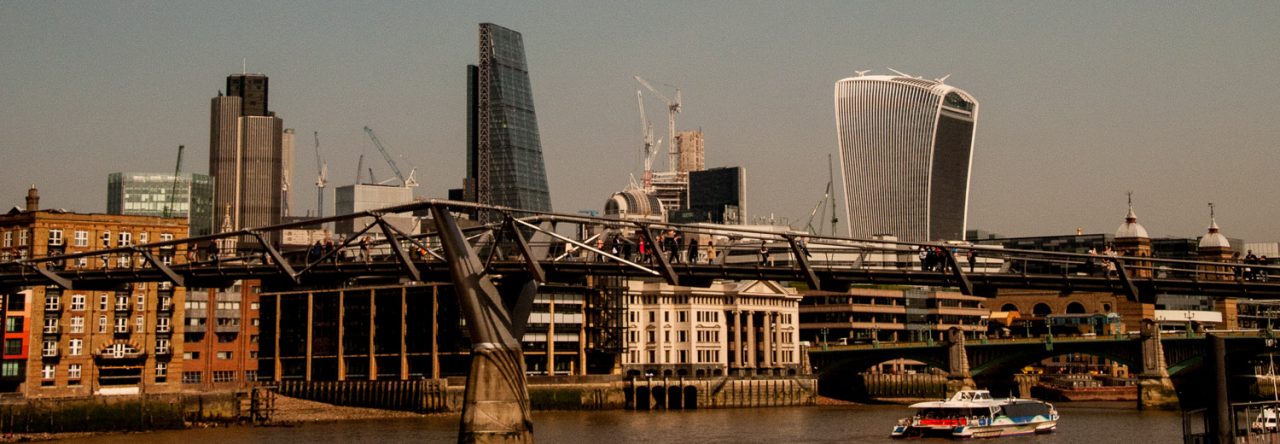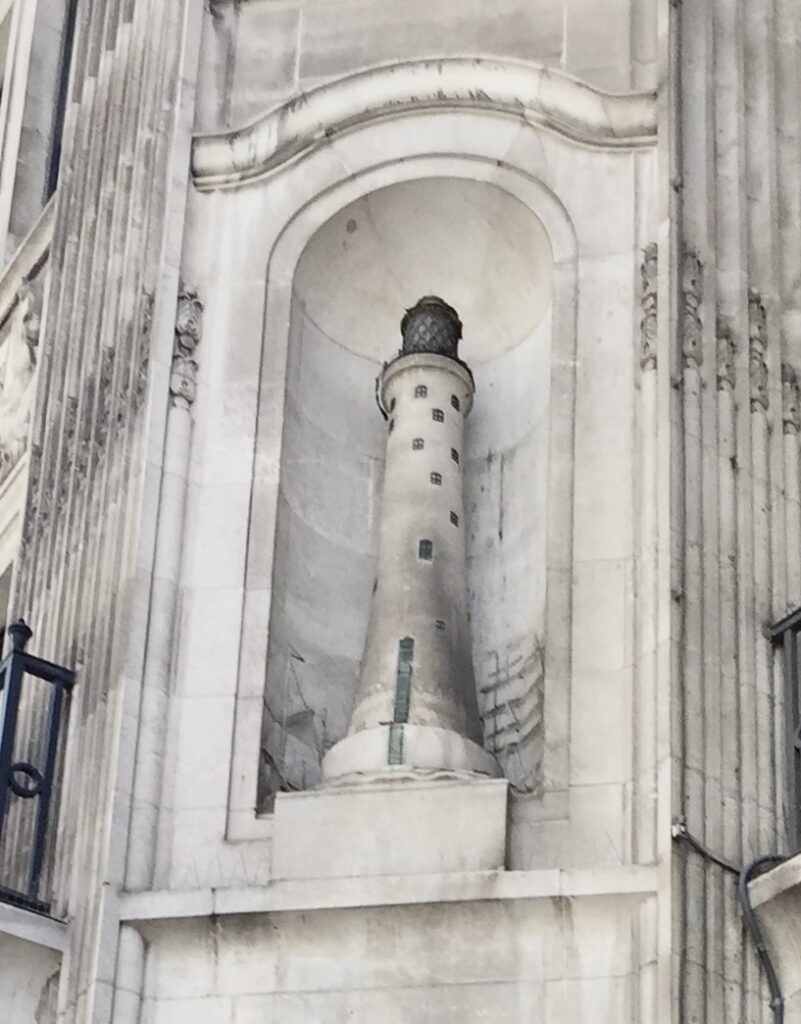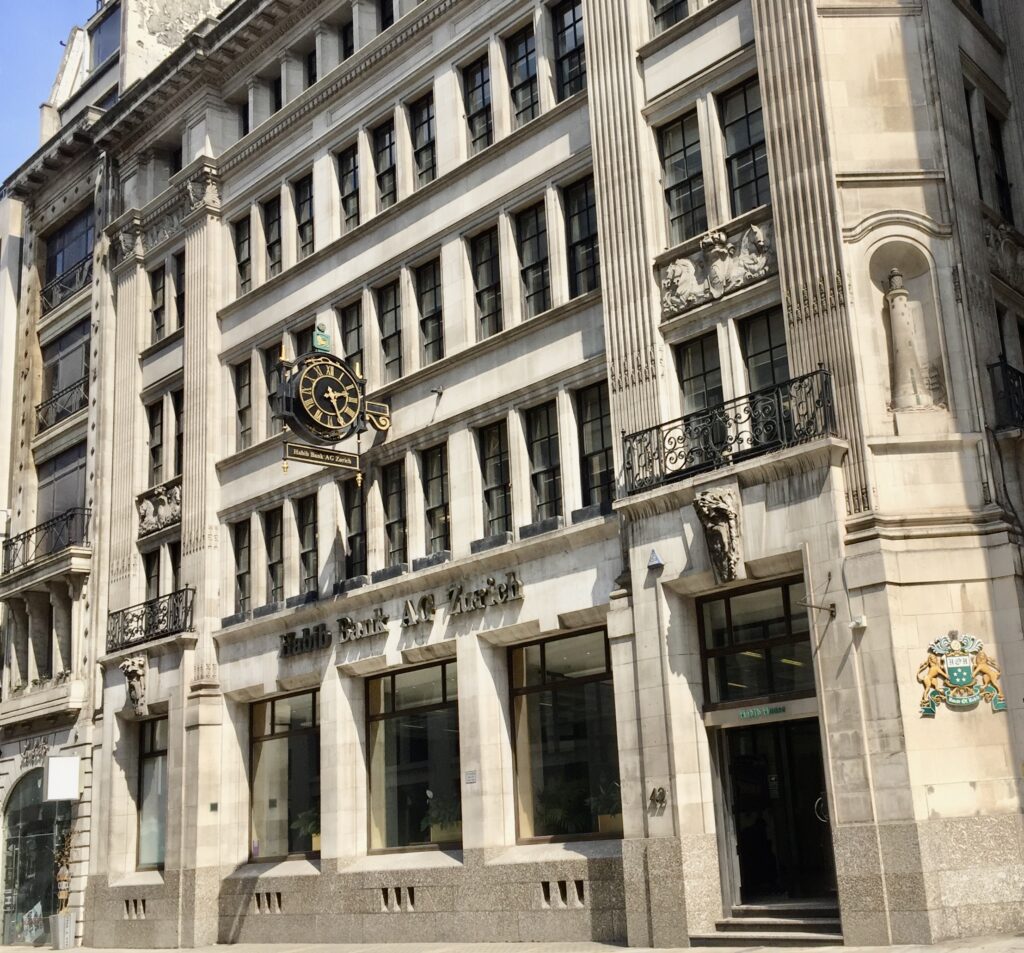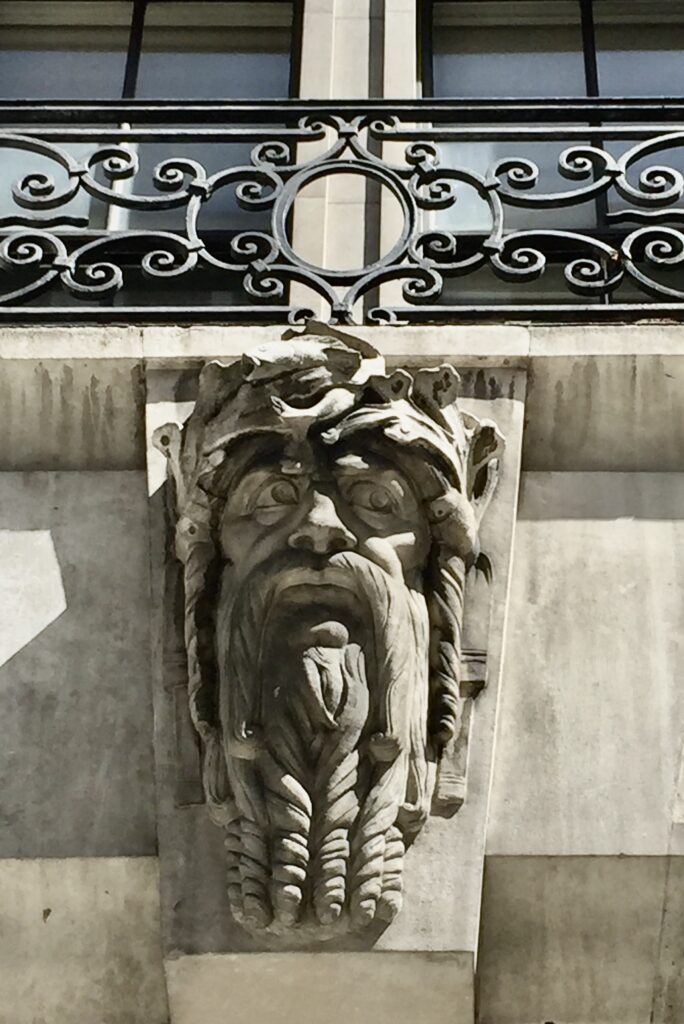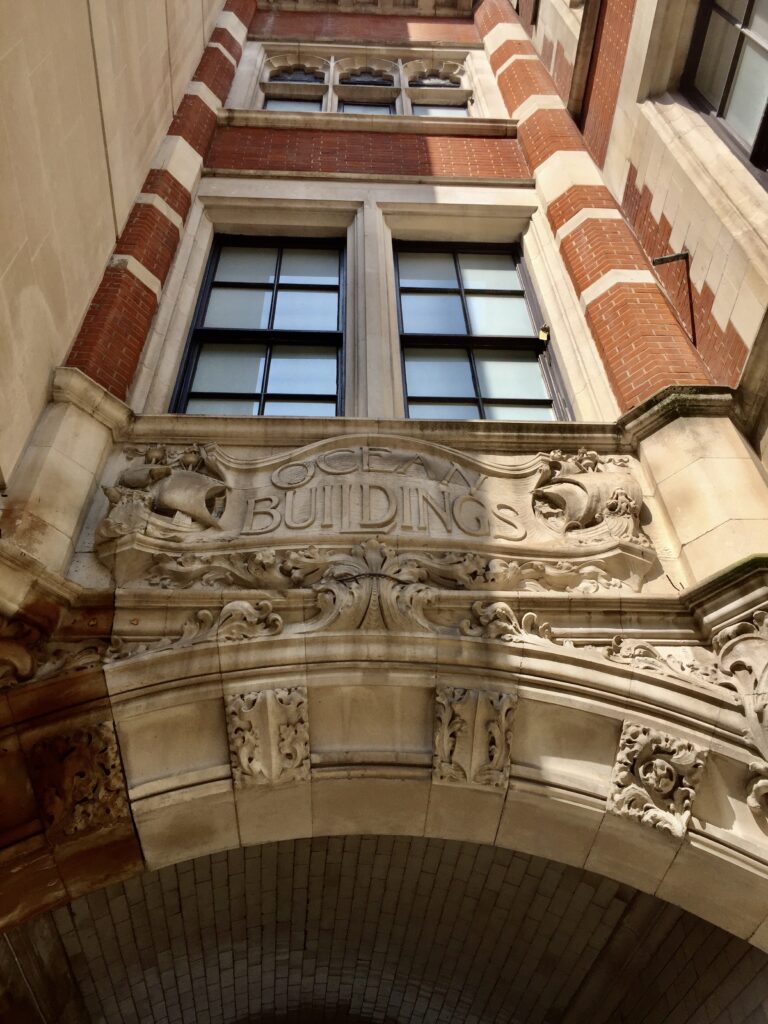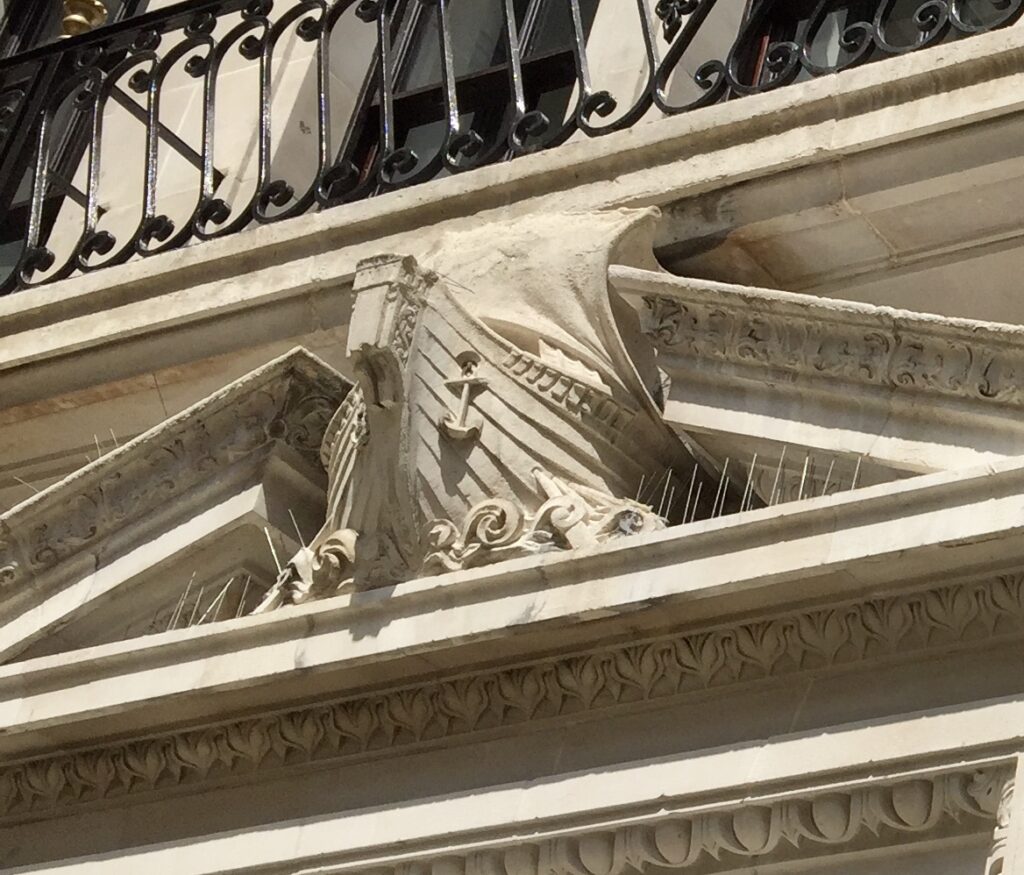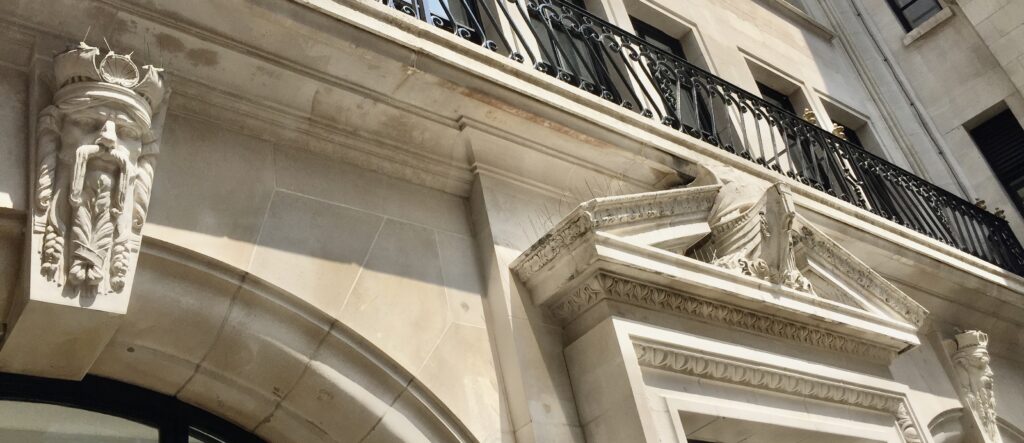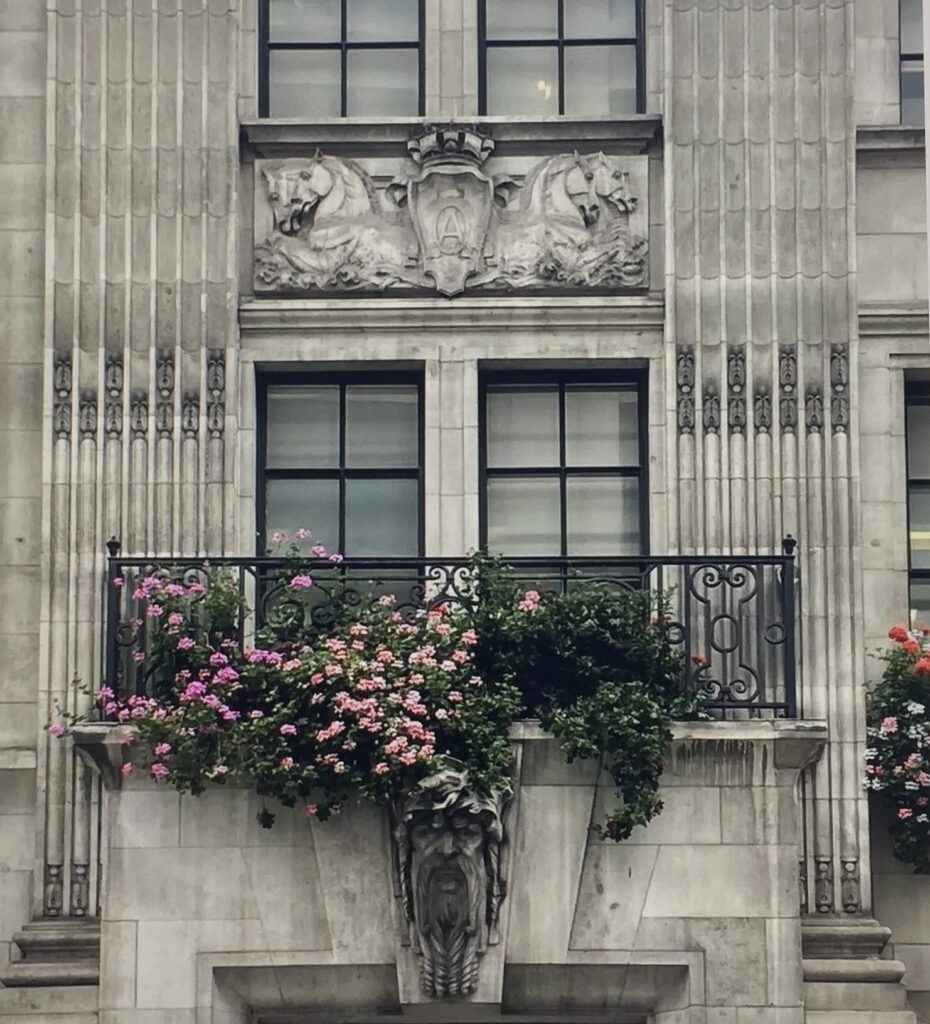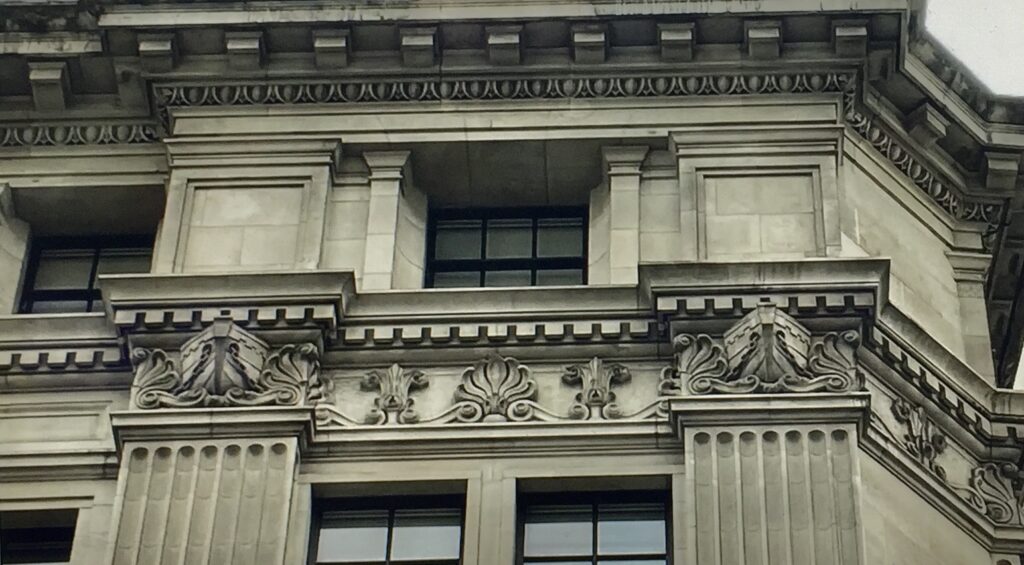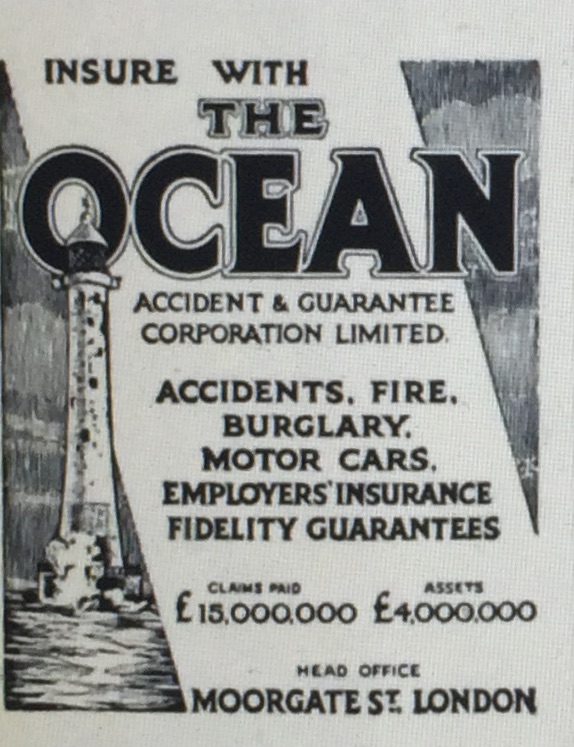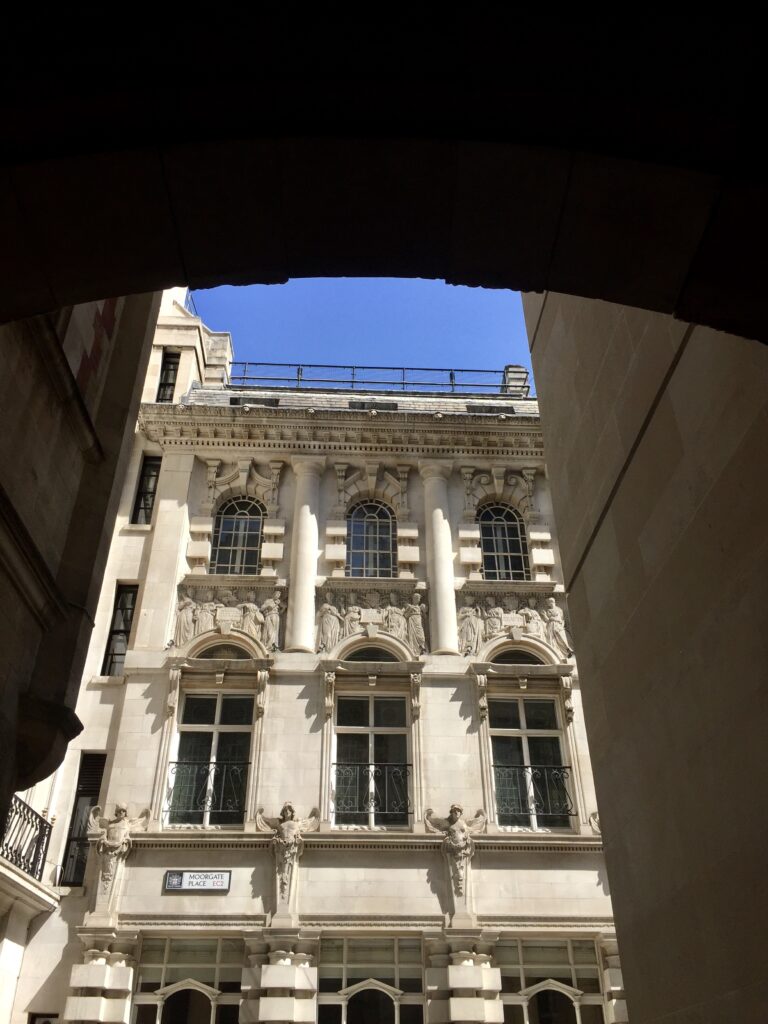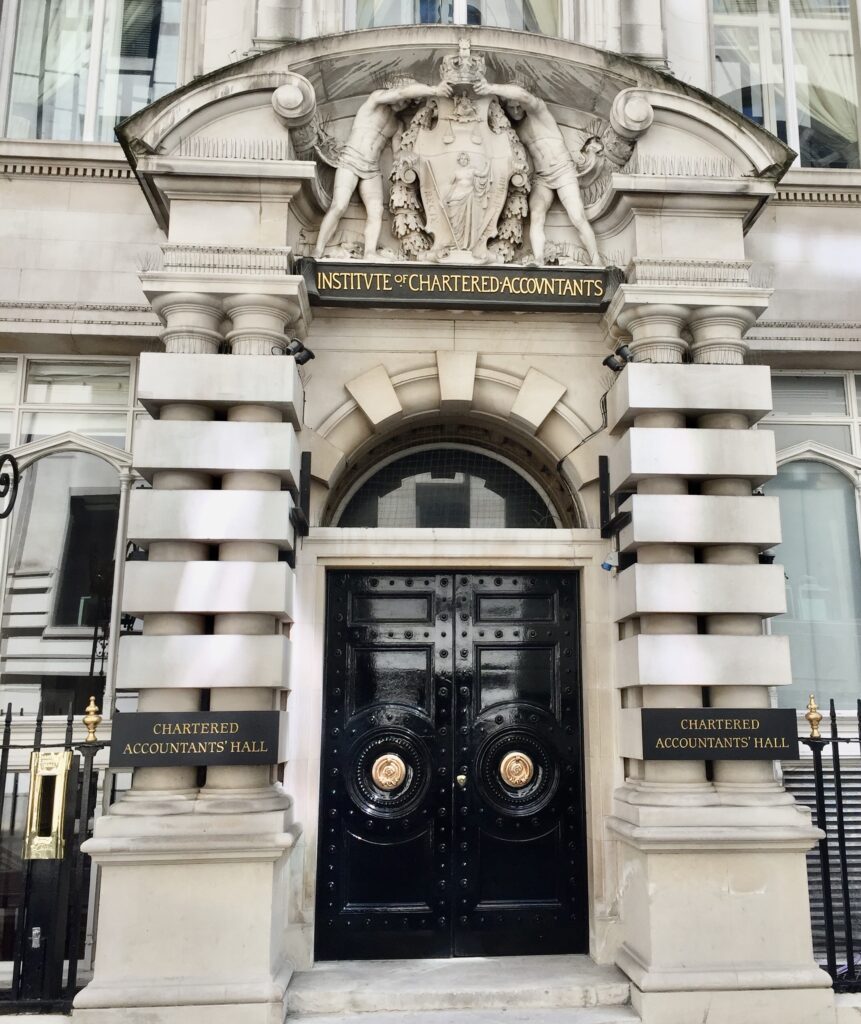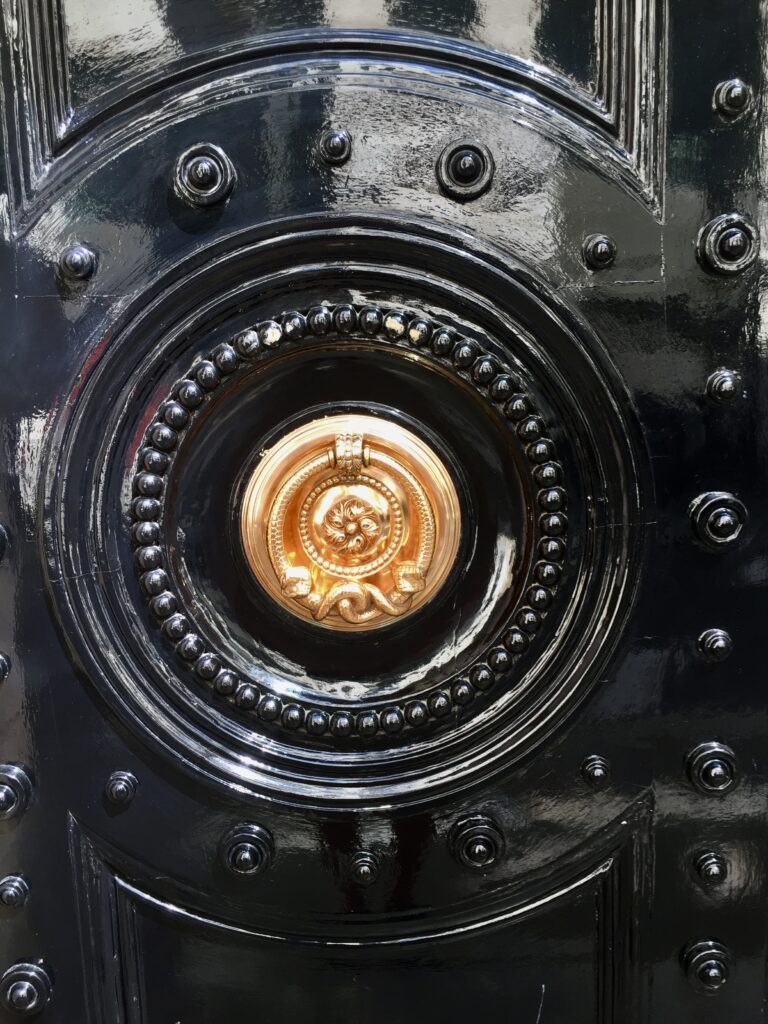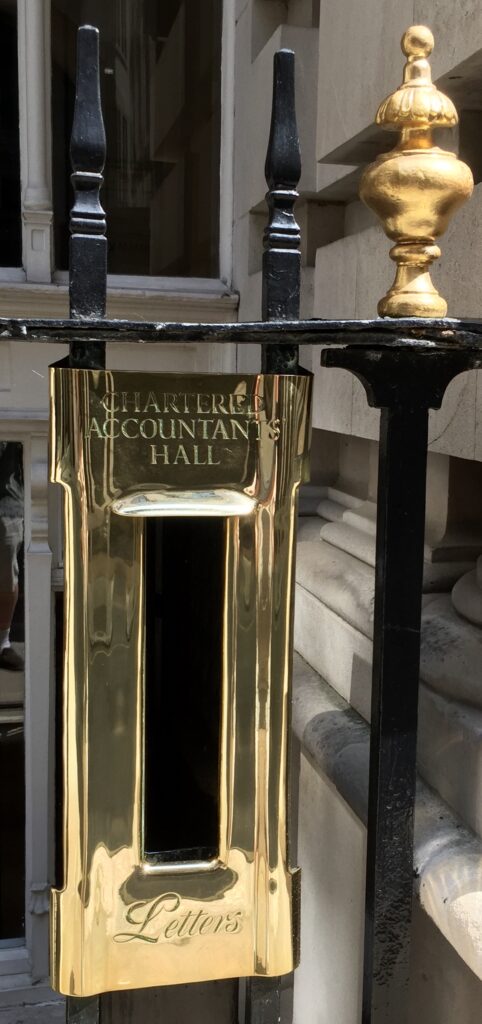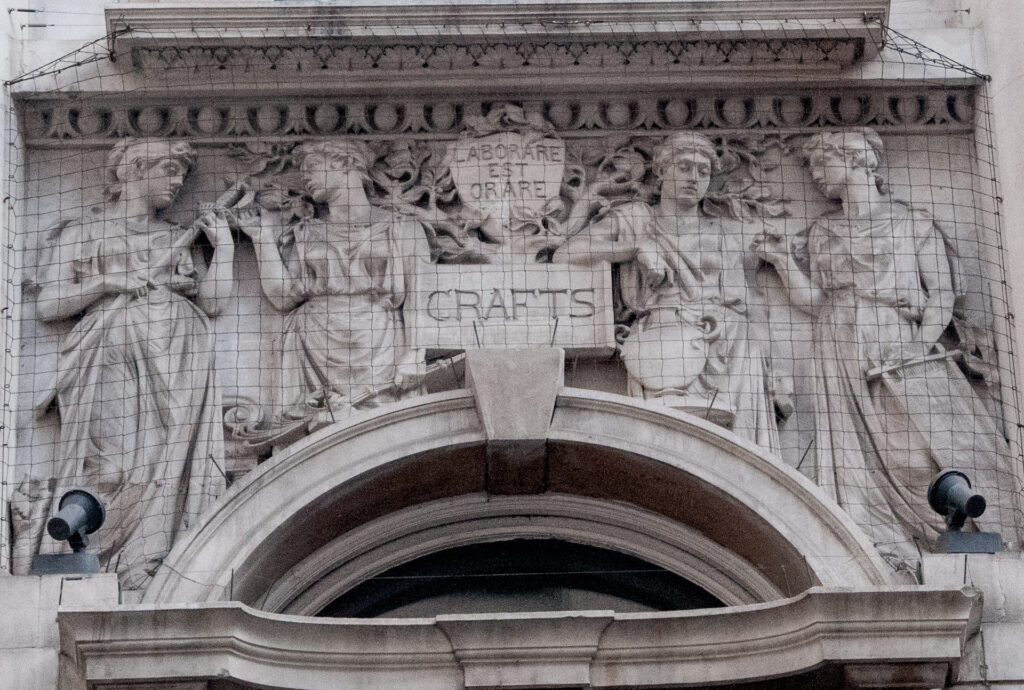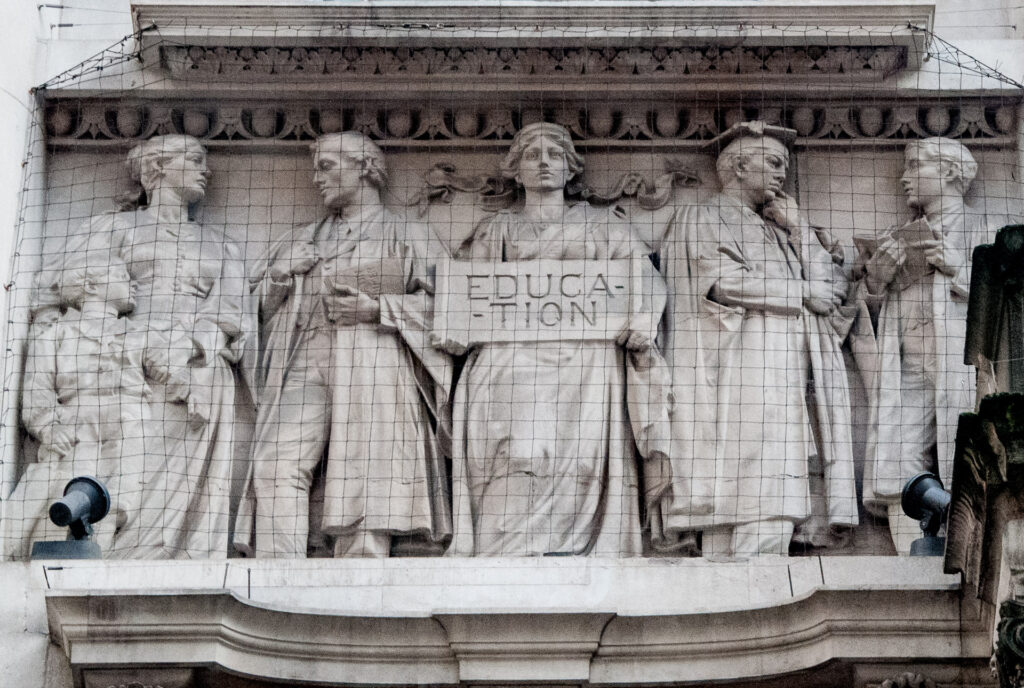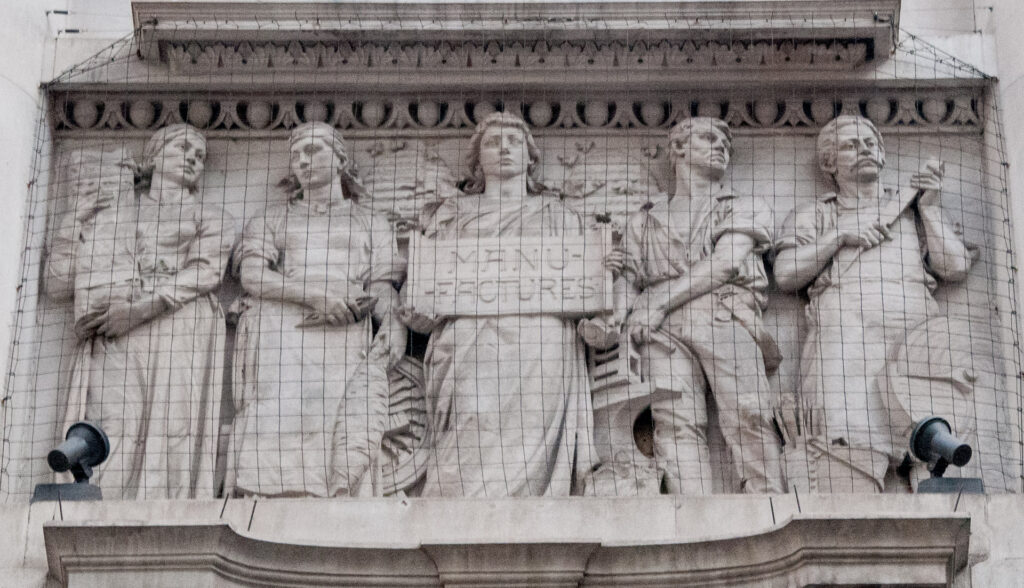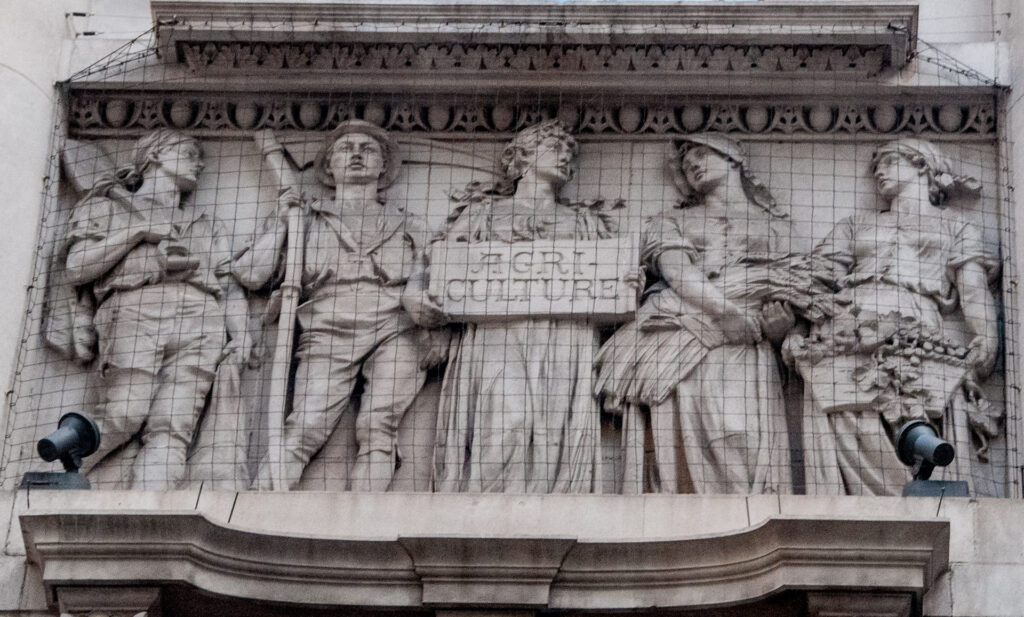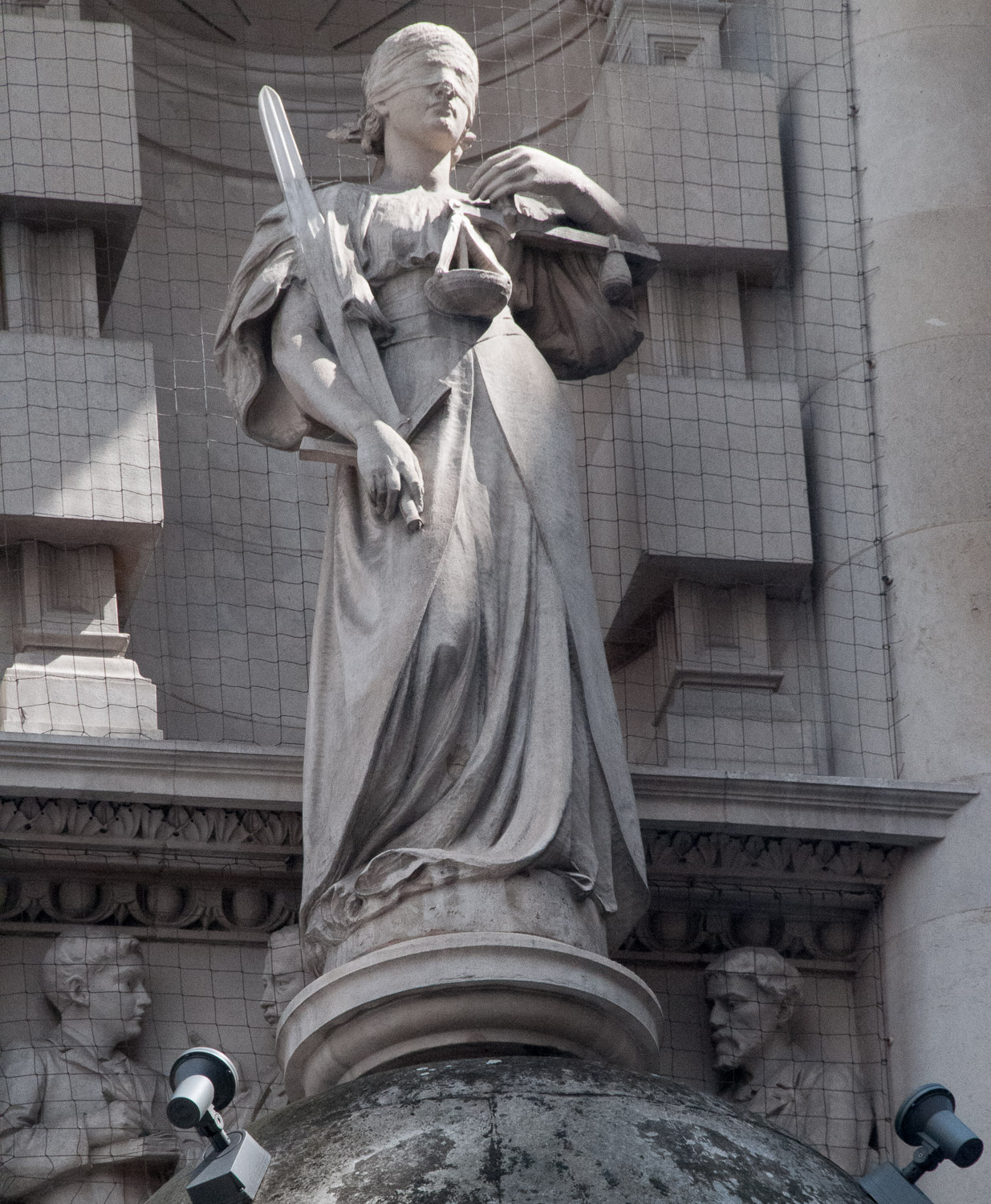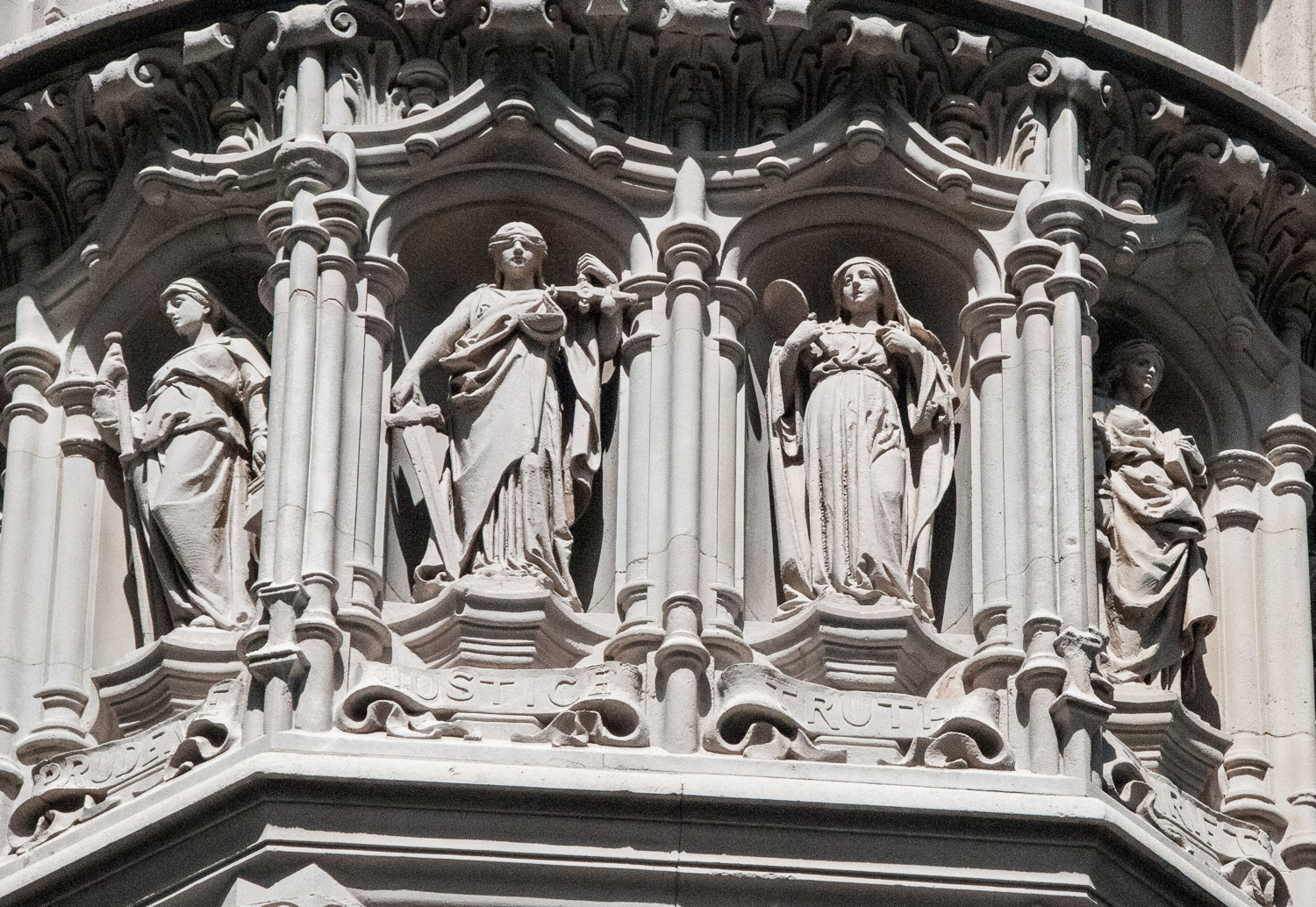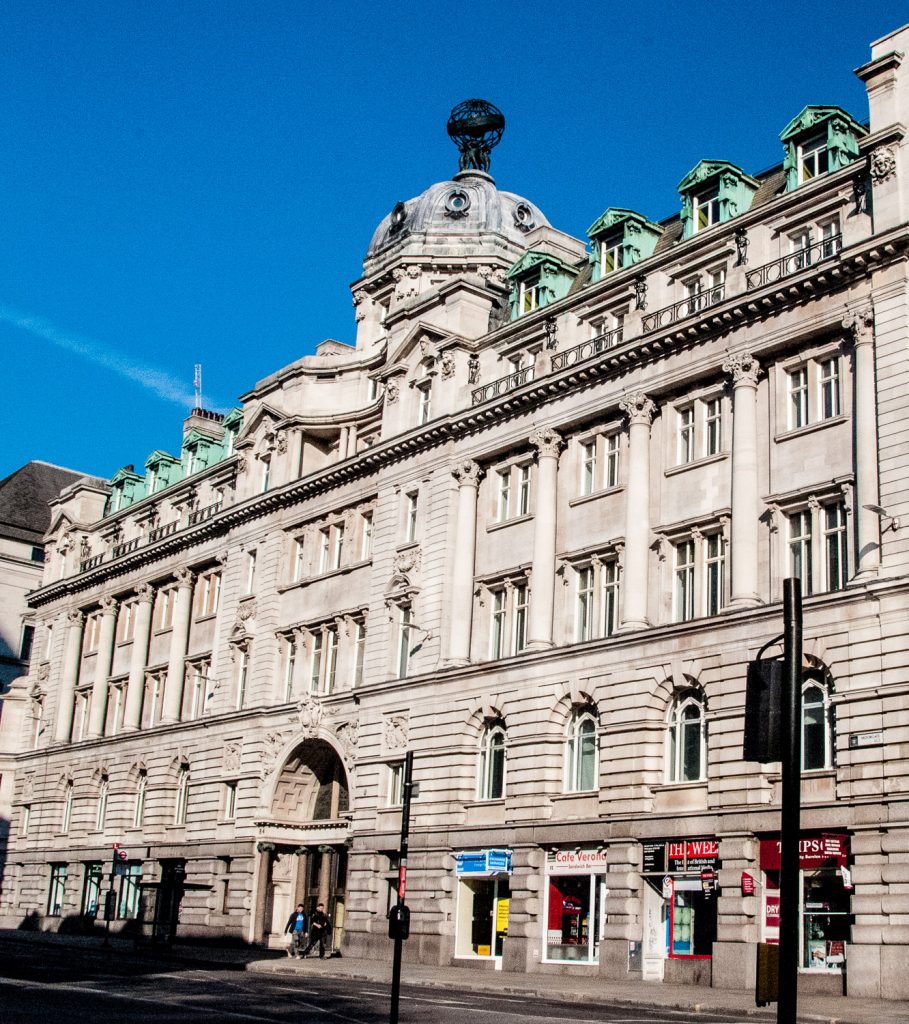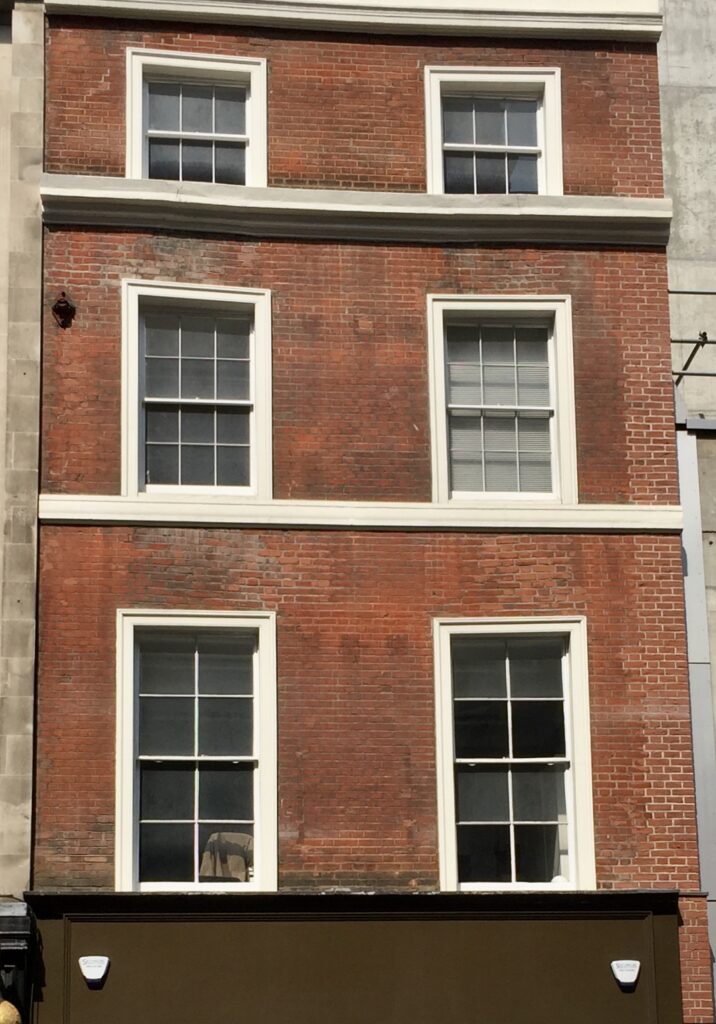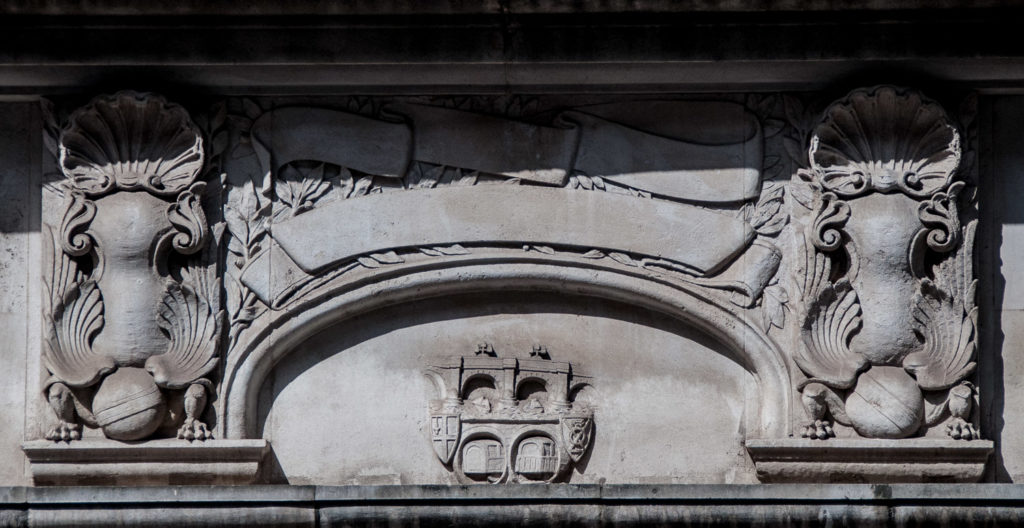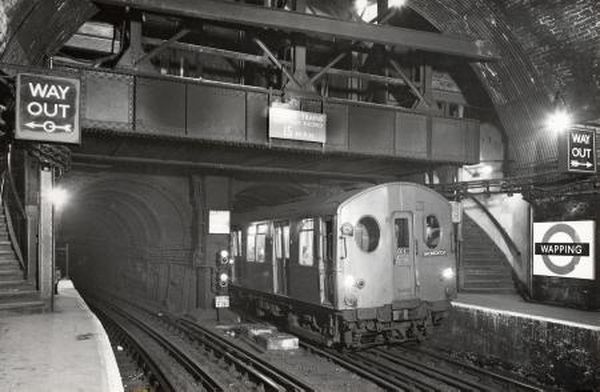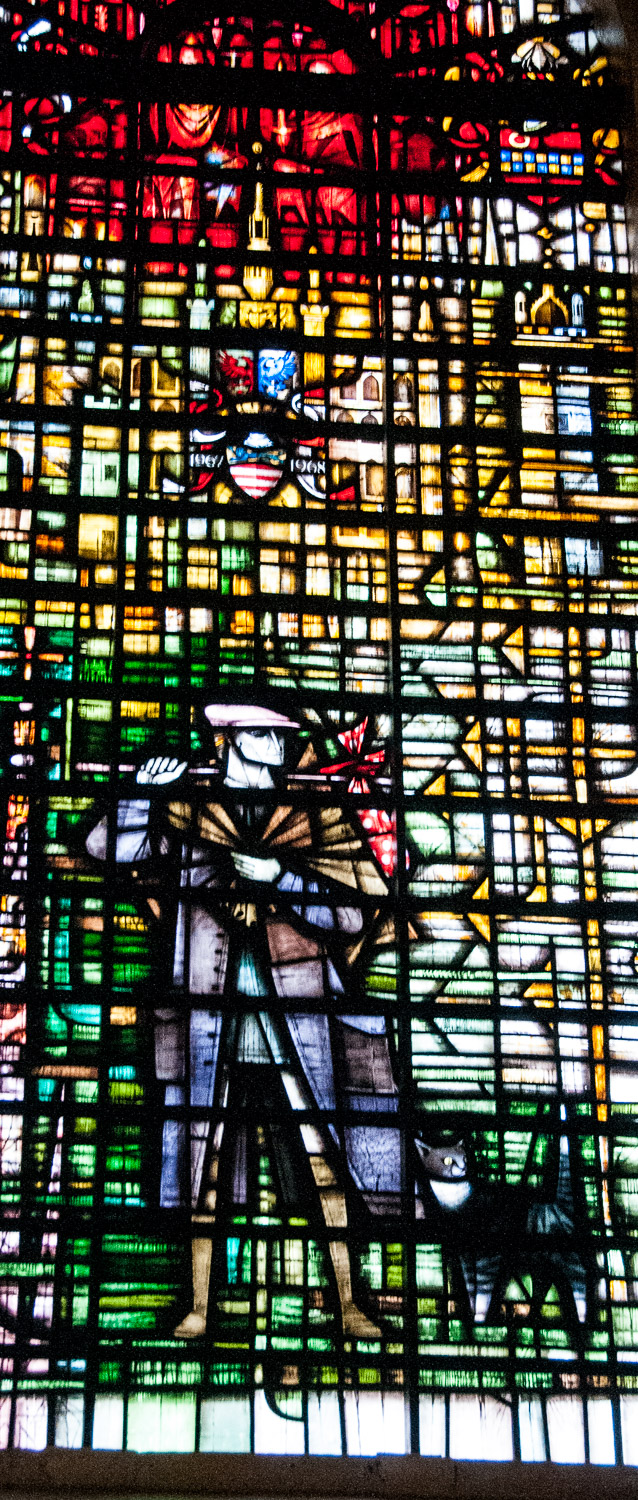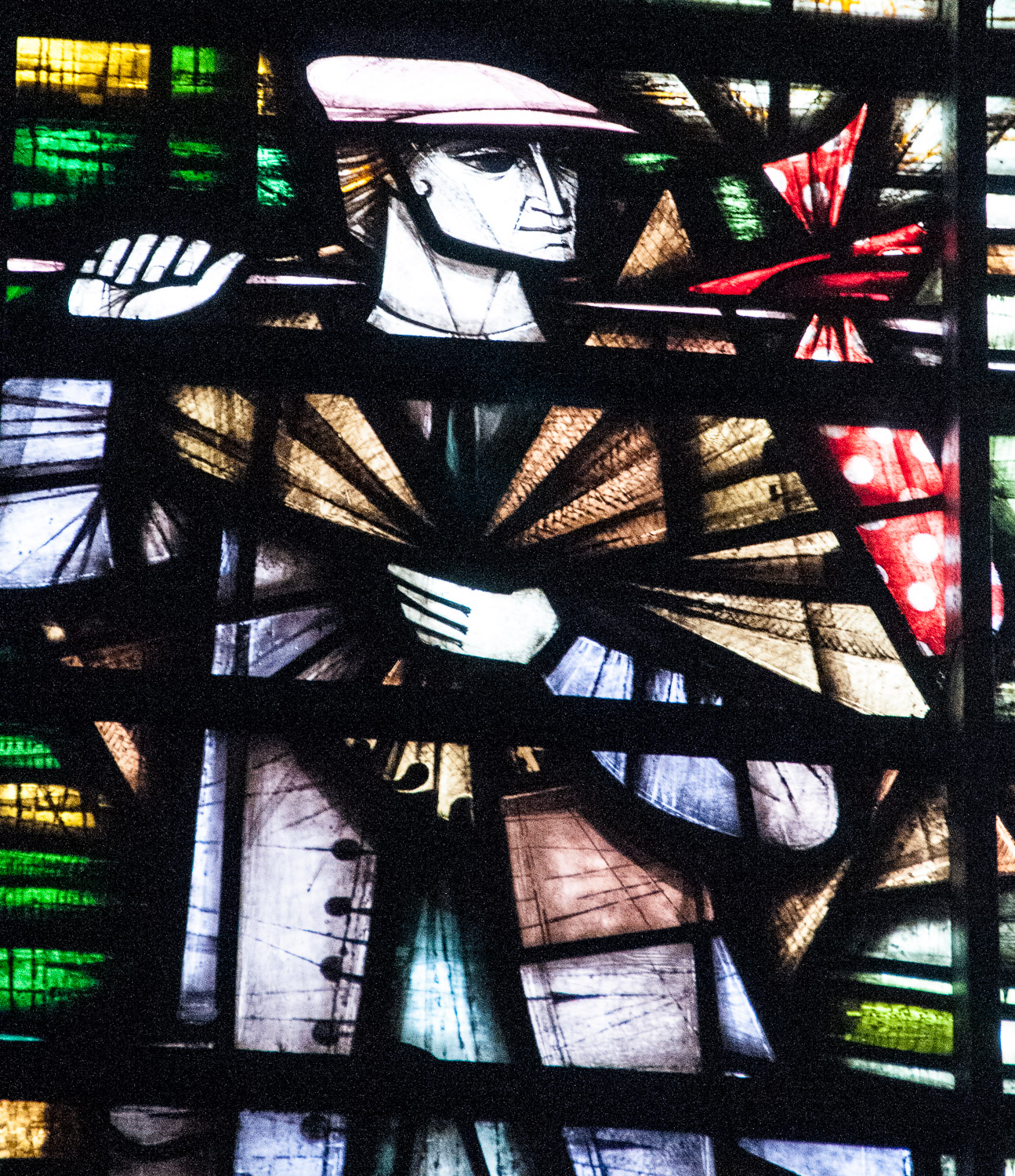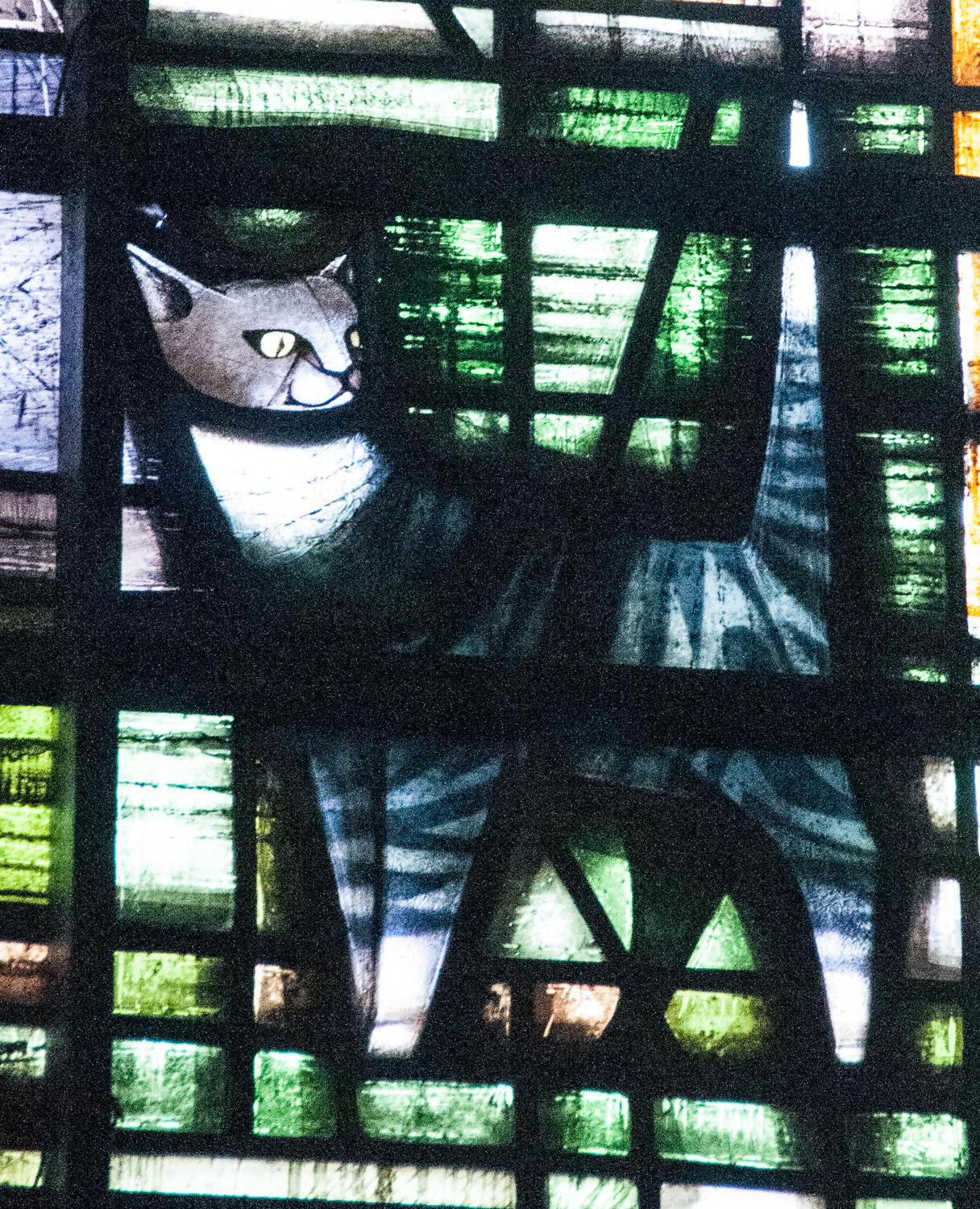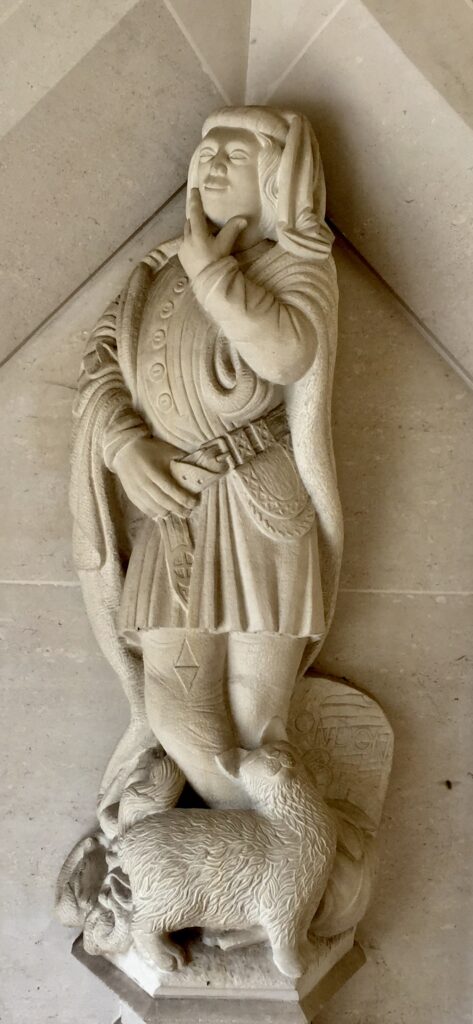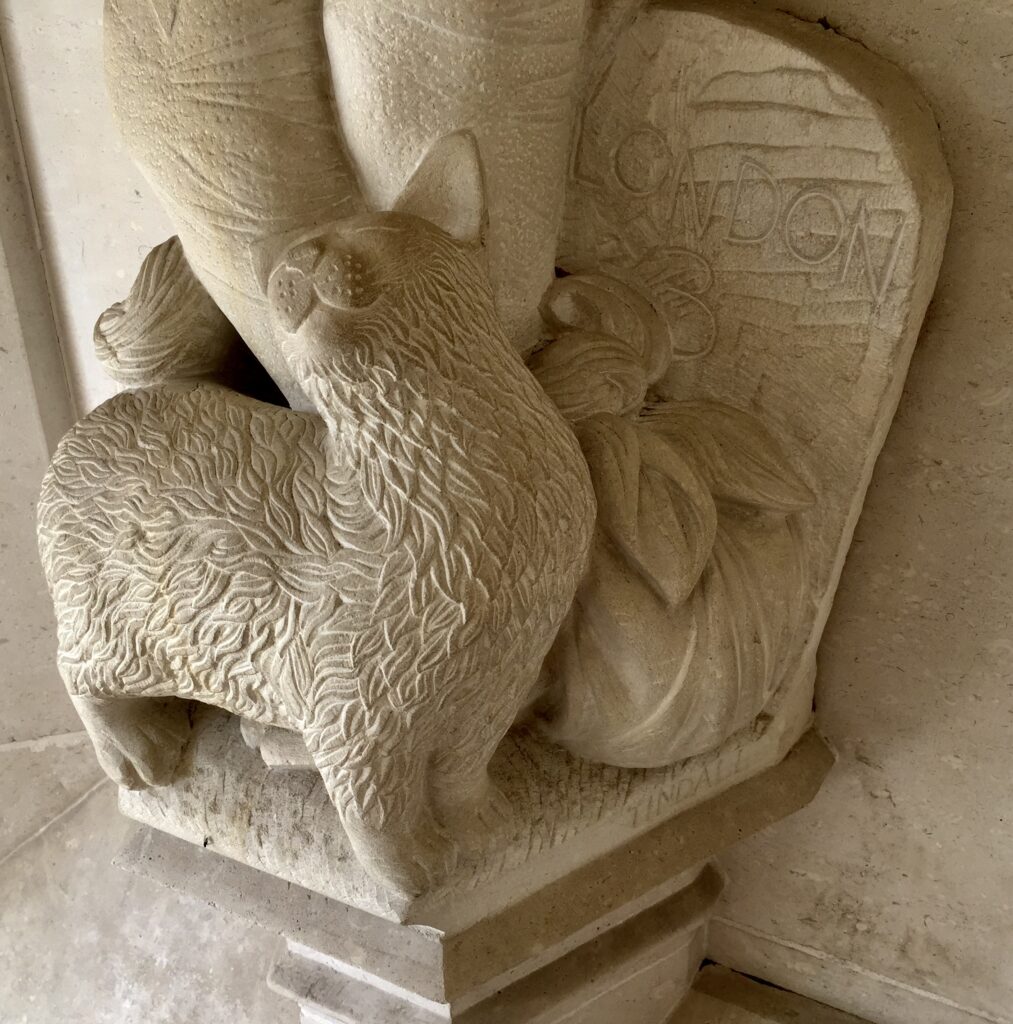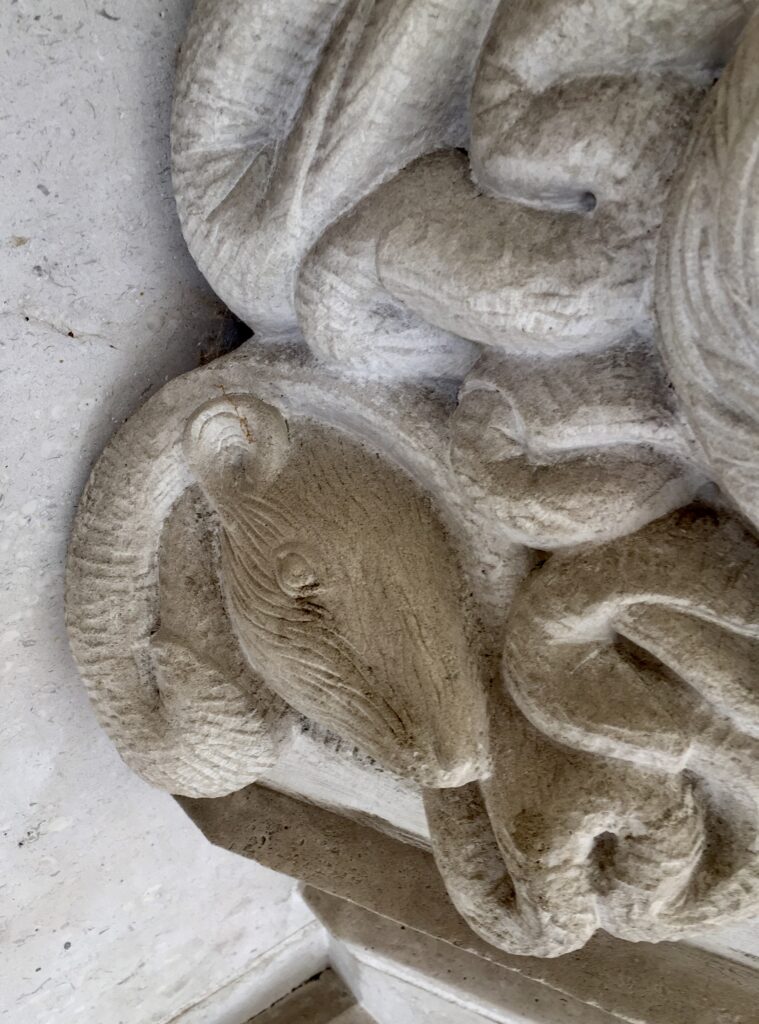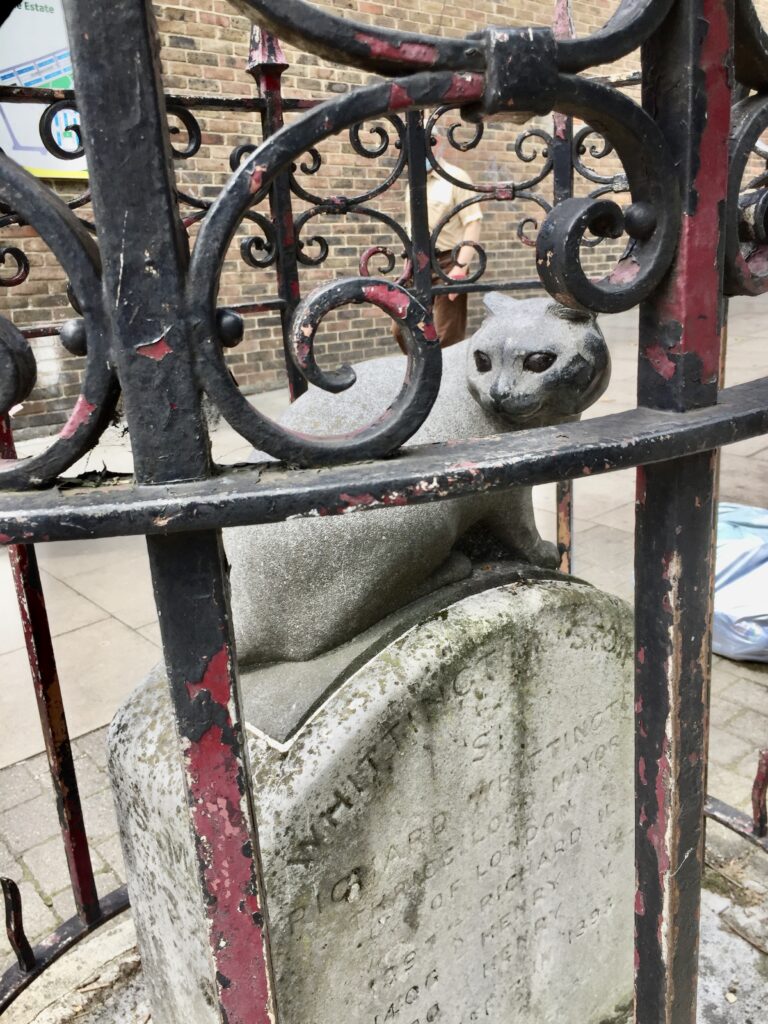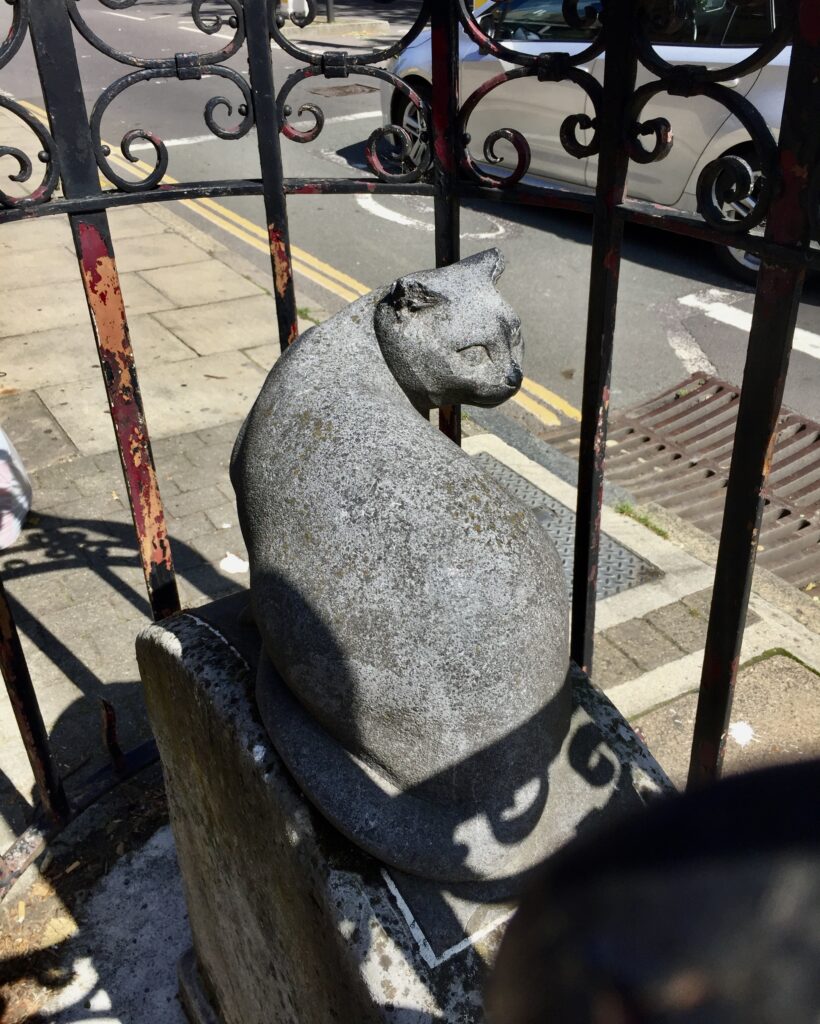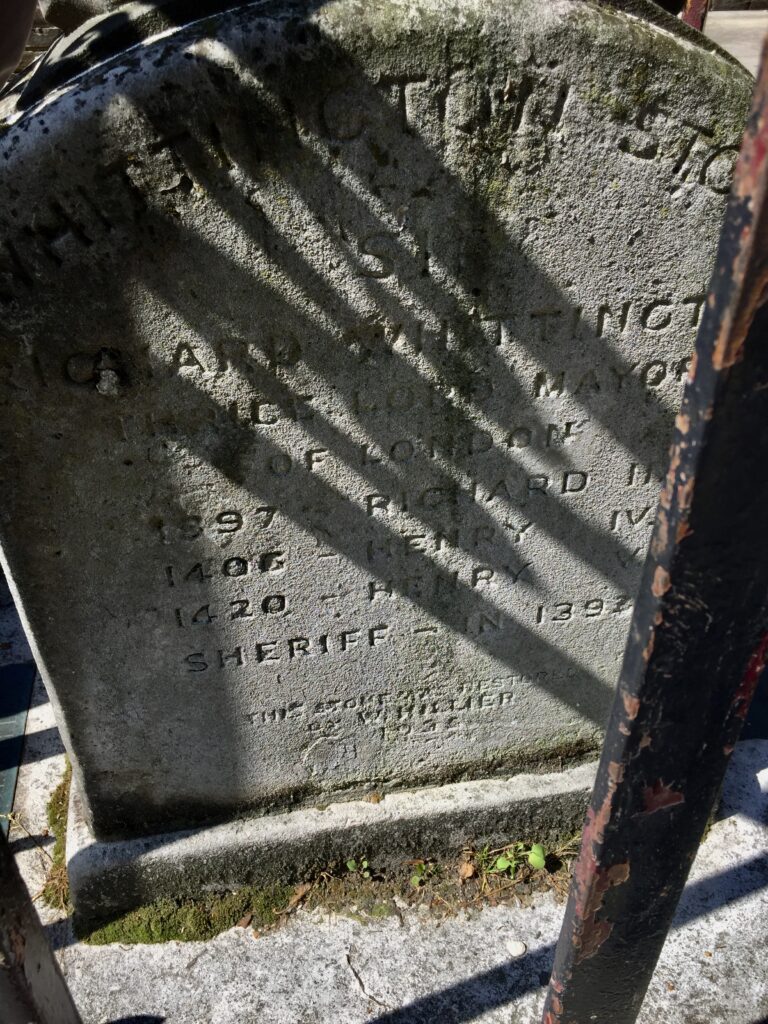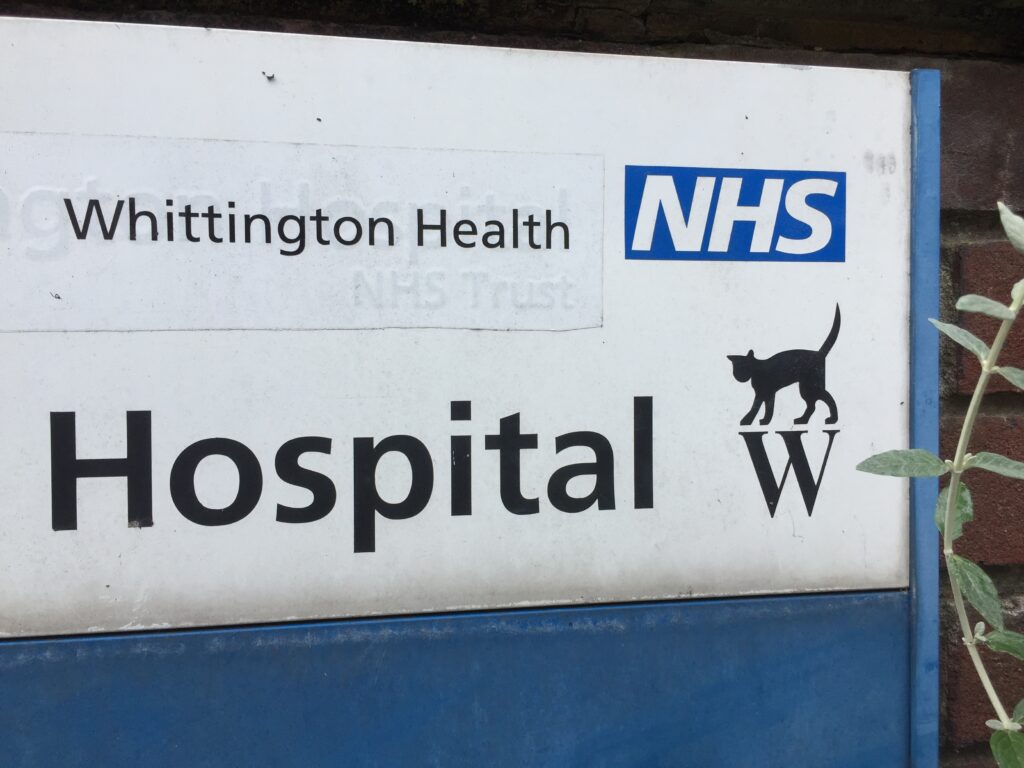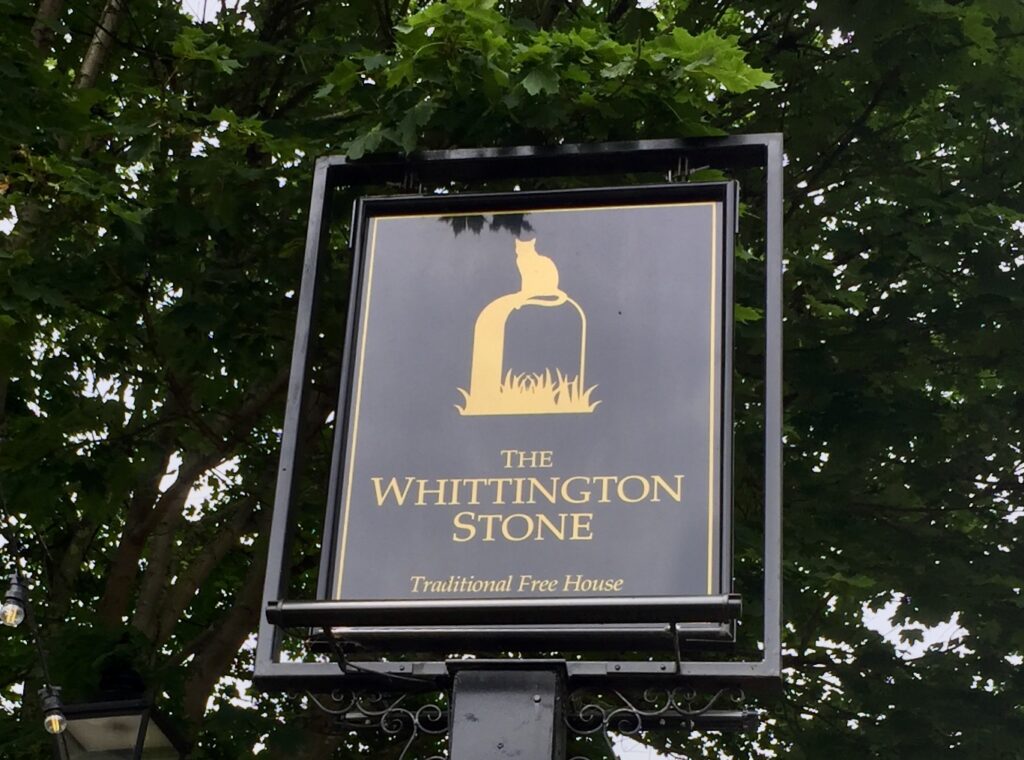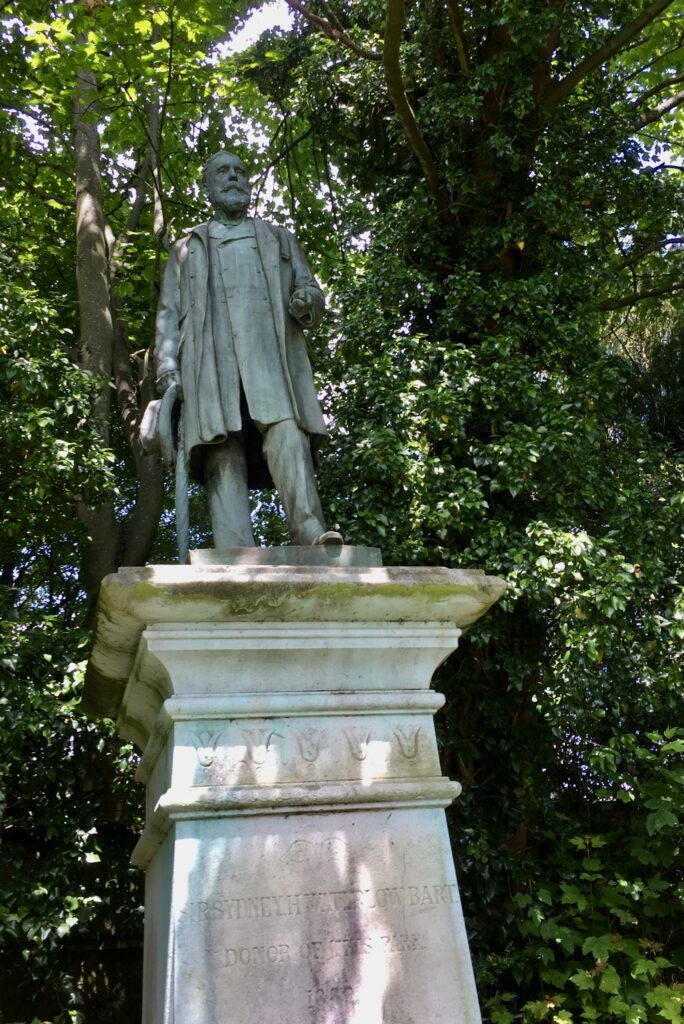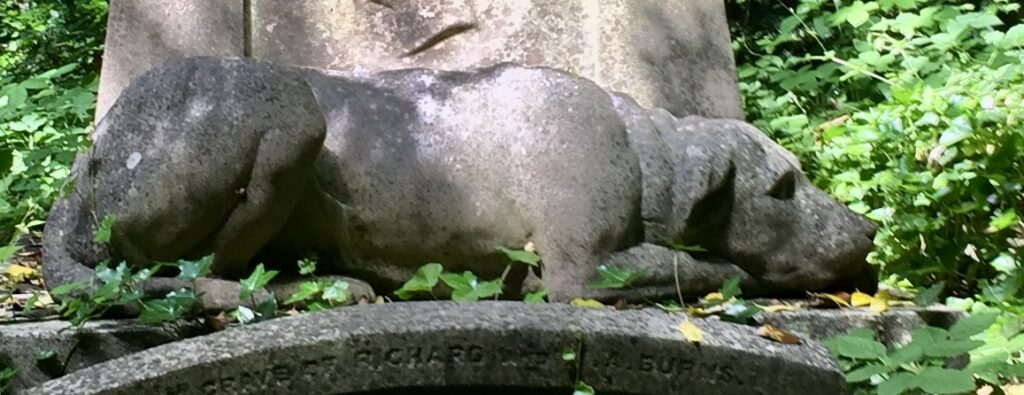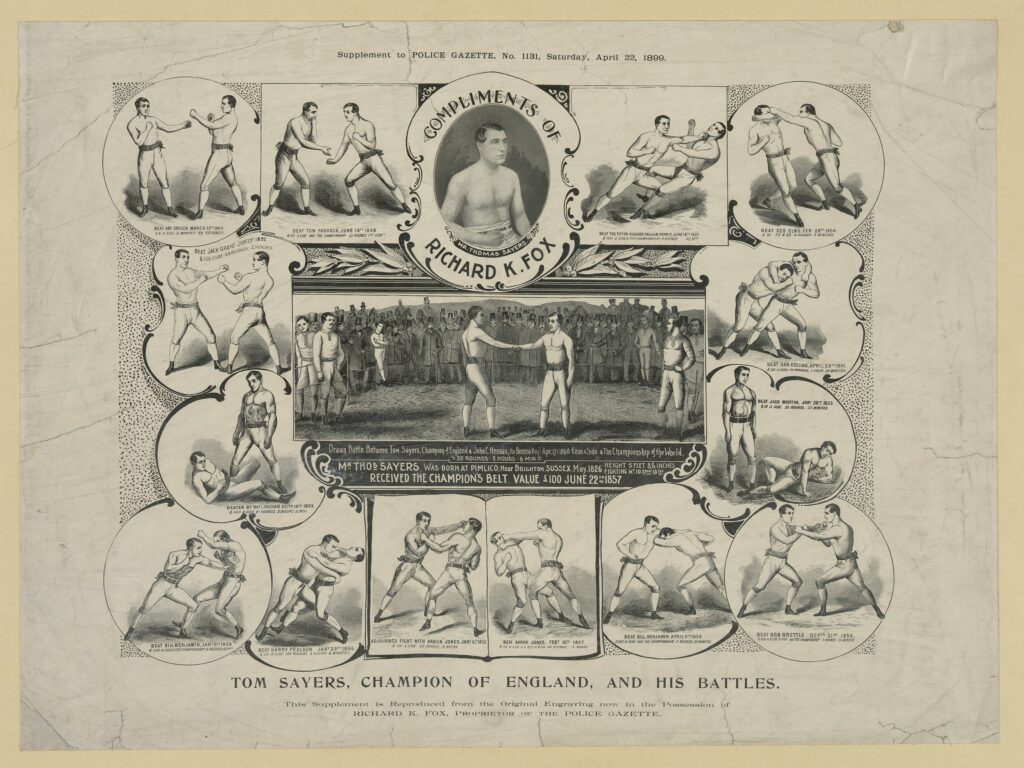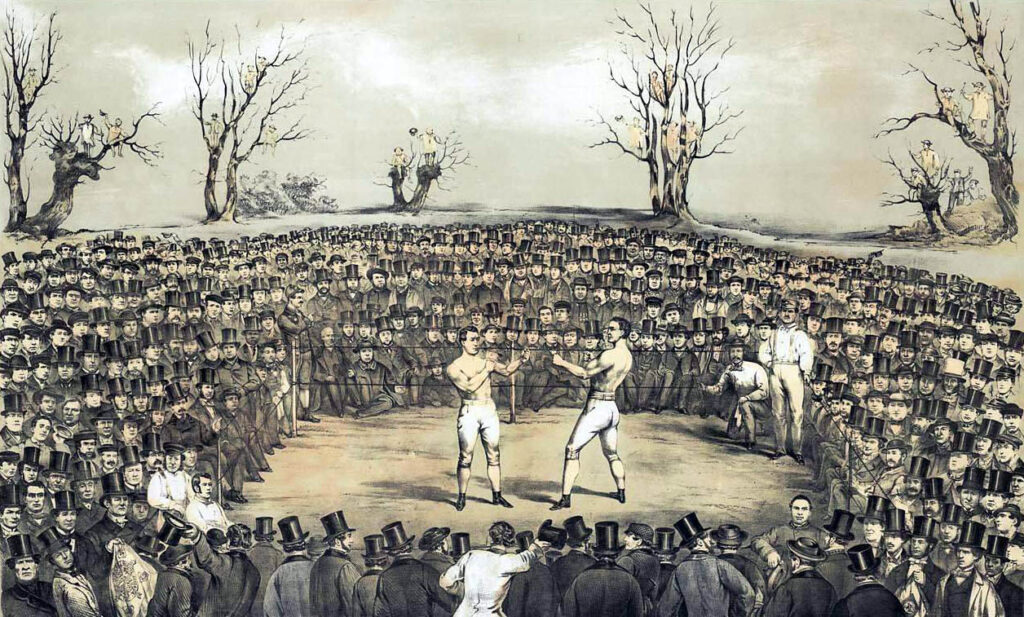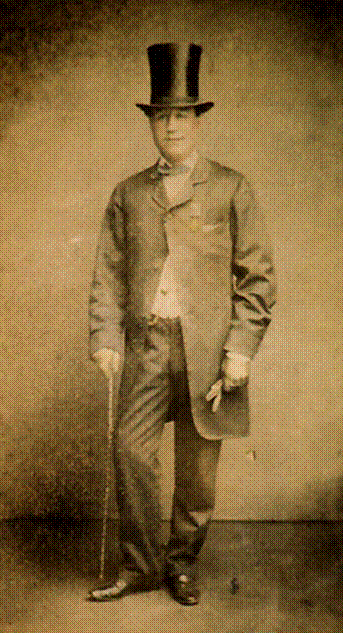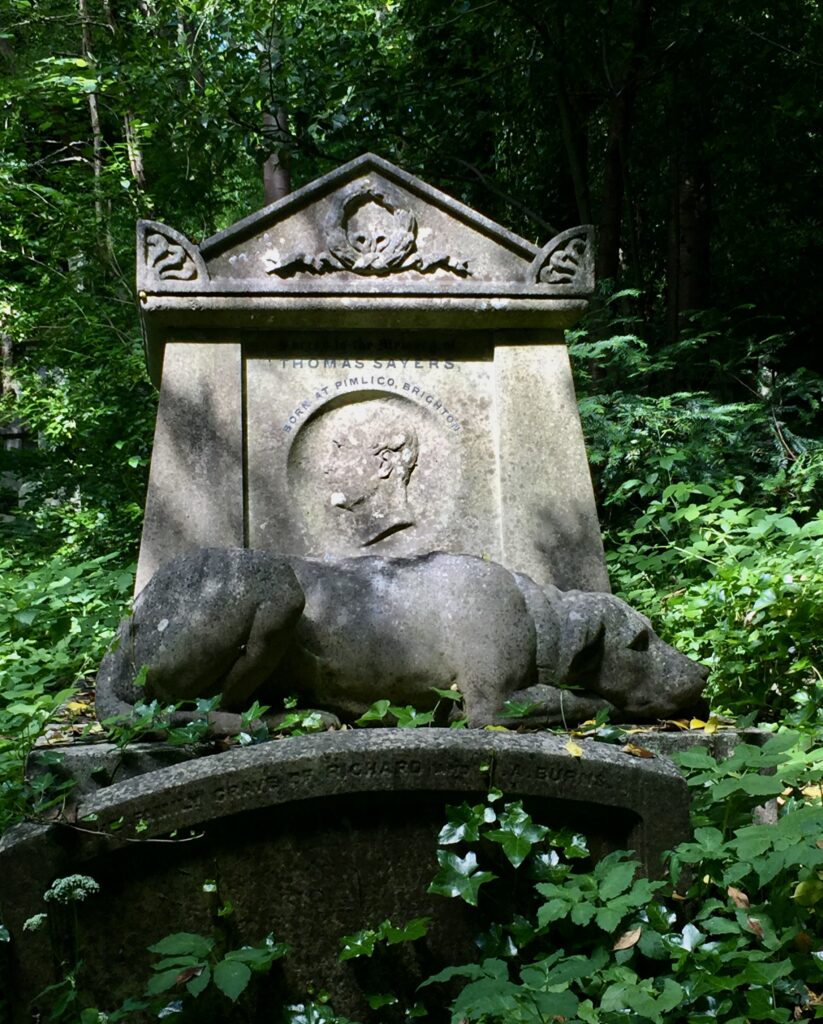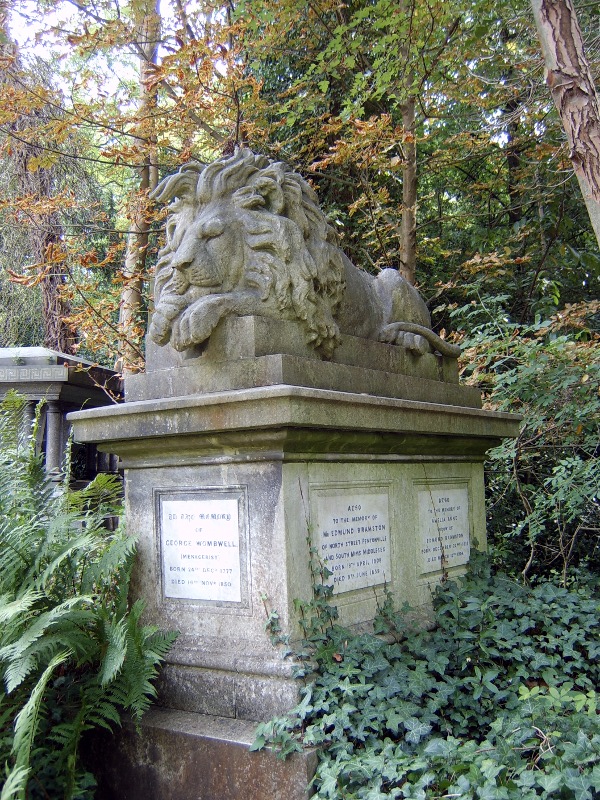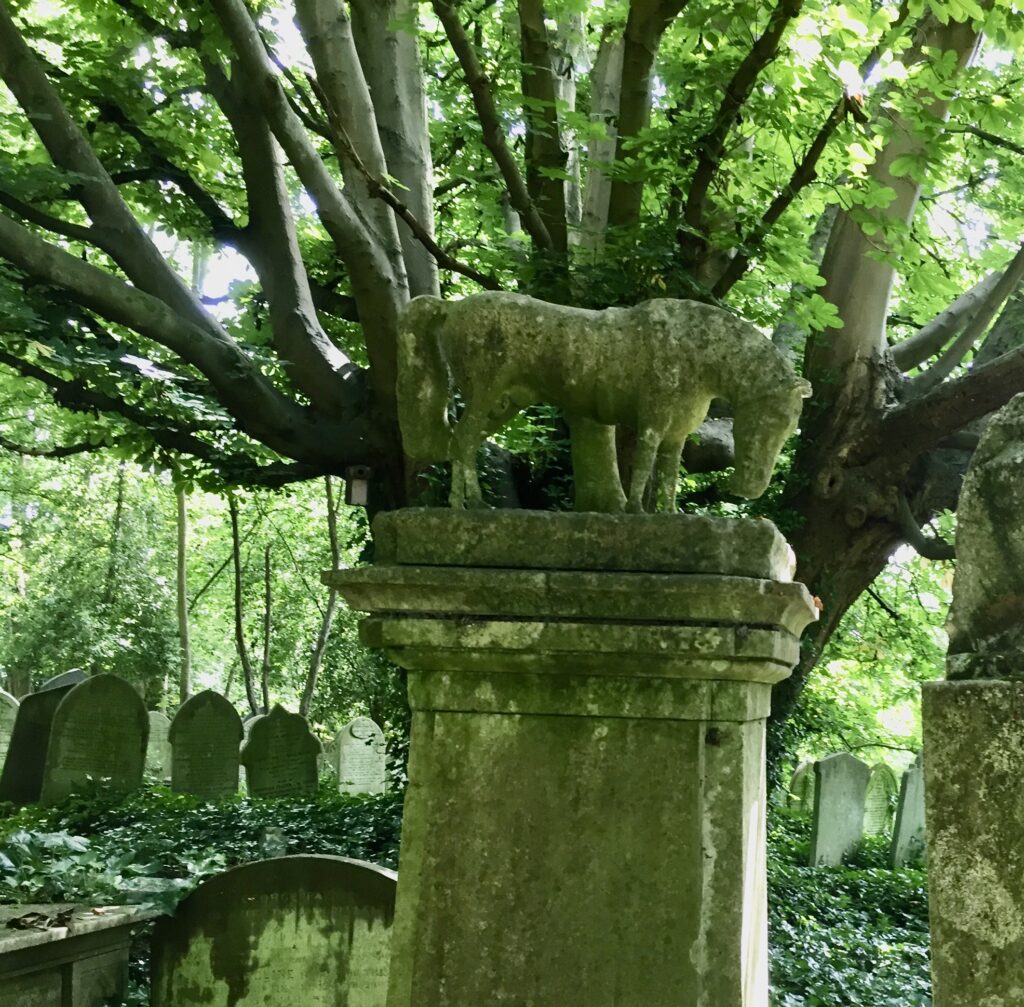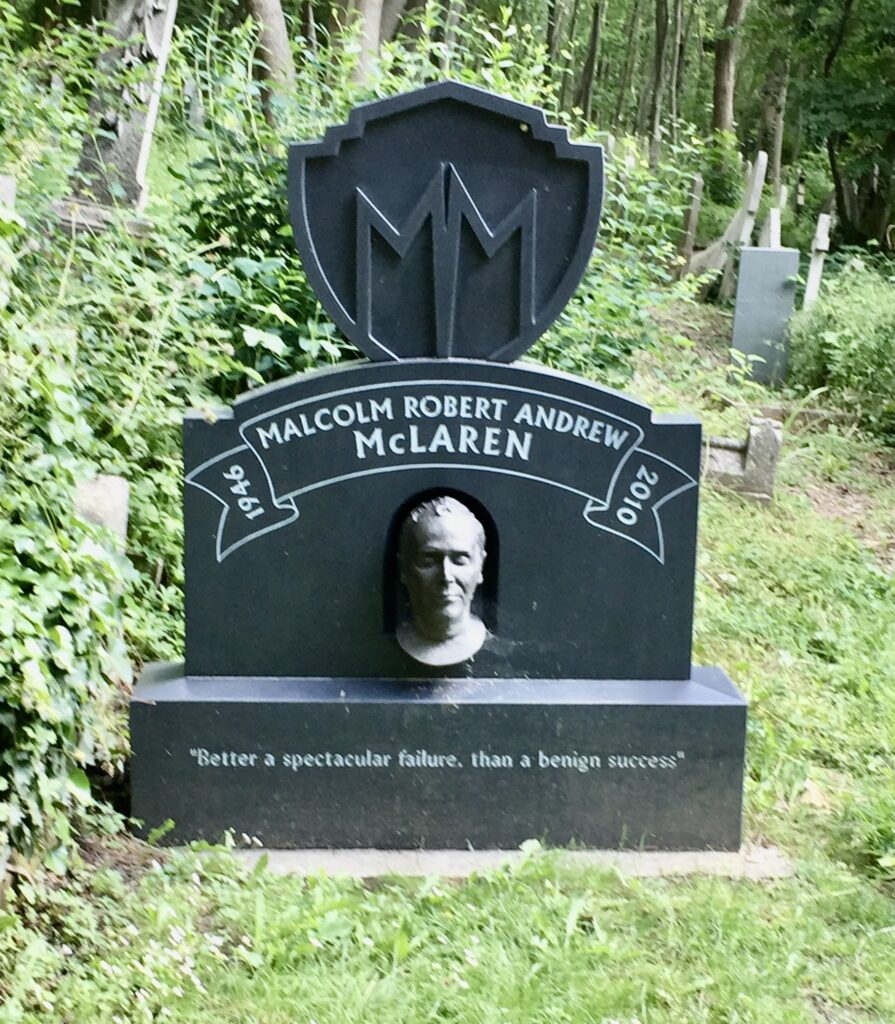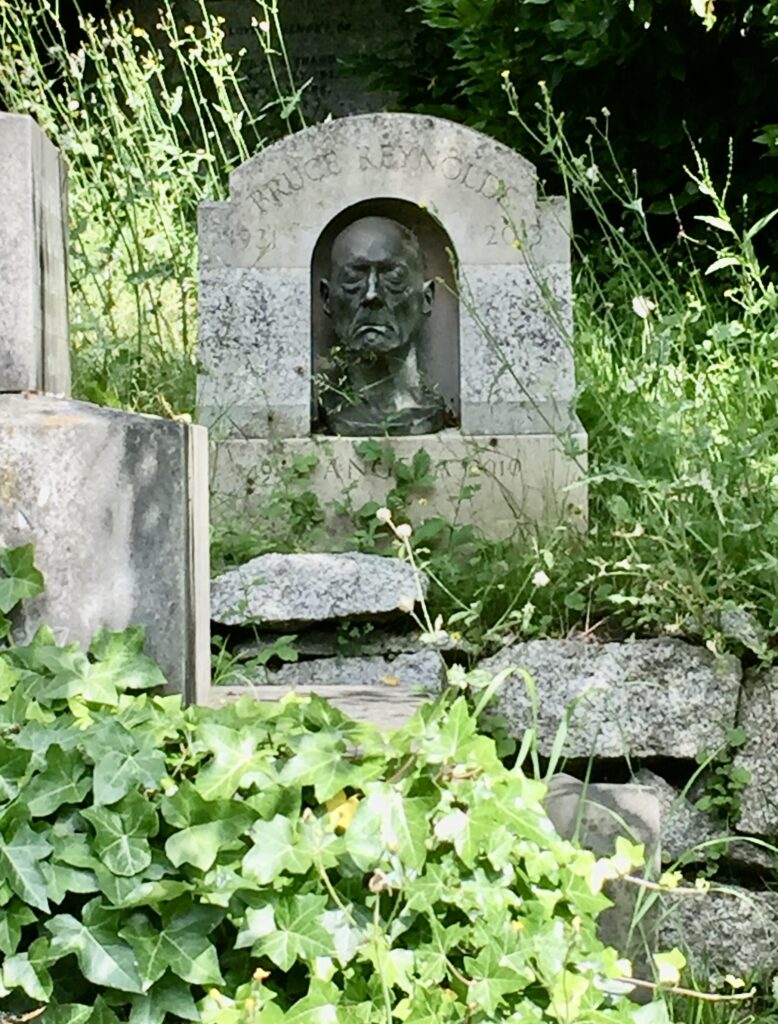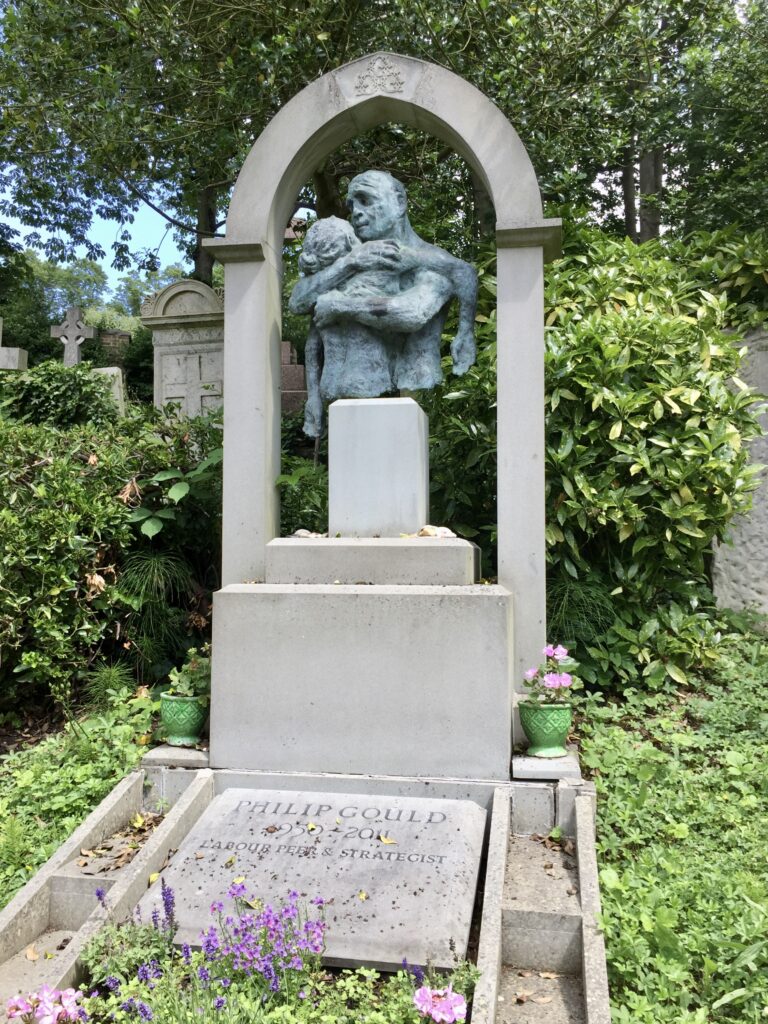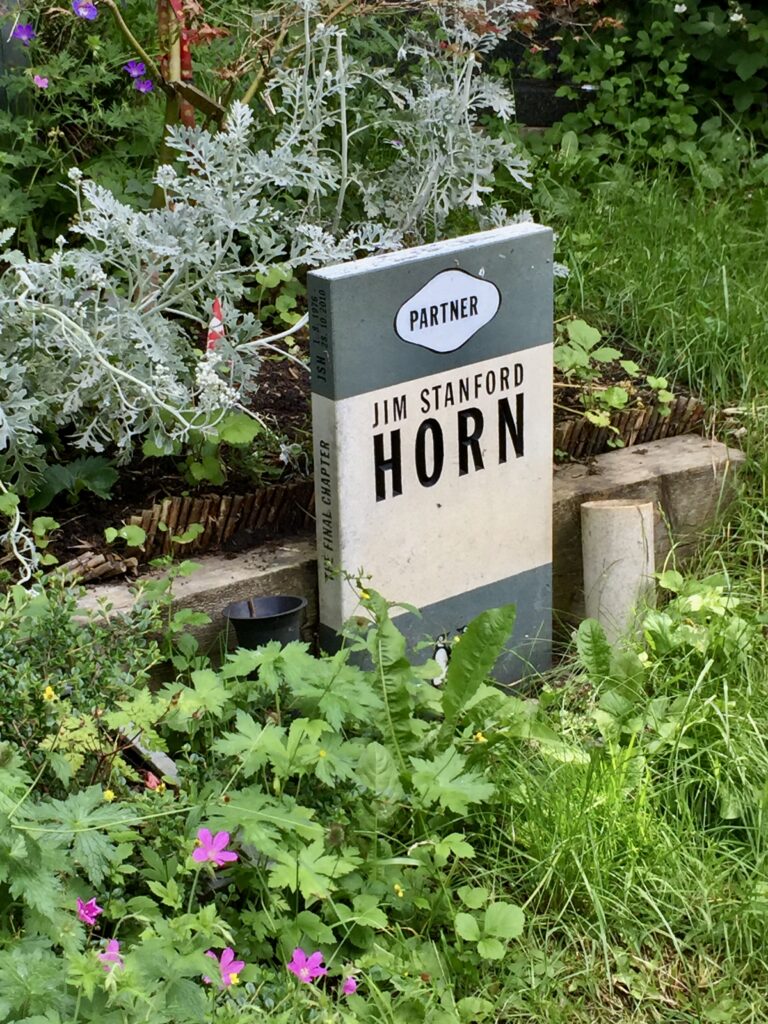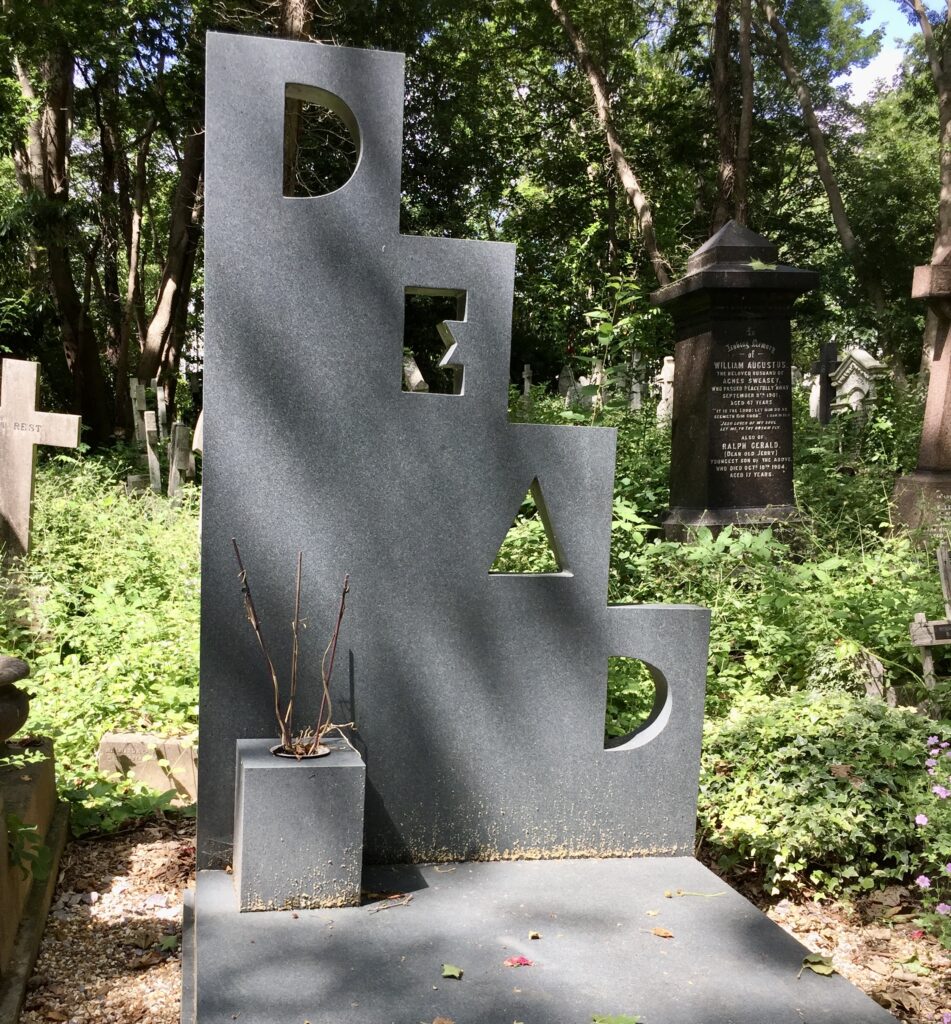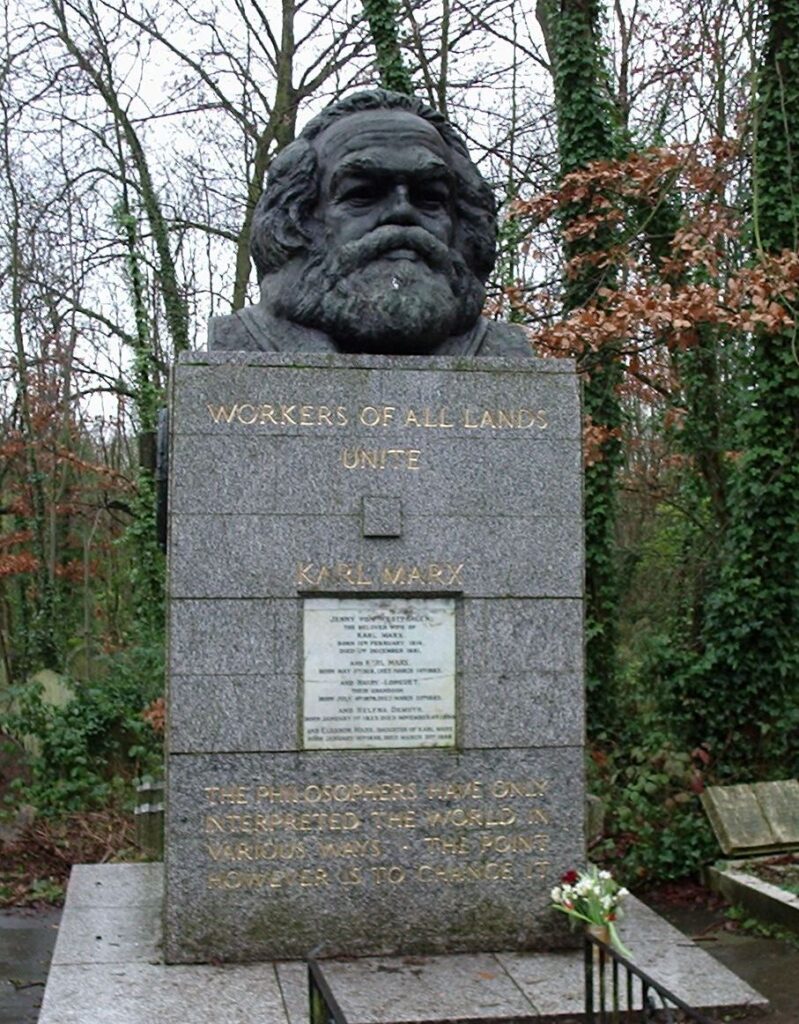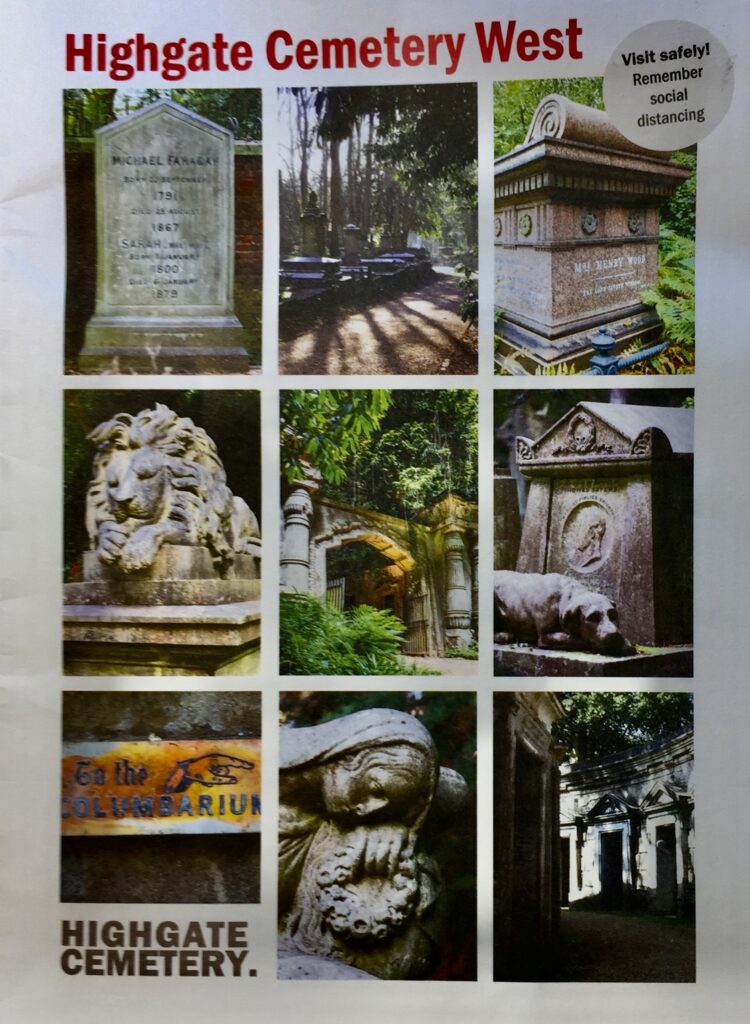Every now and then I have to travel to King’s Cross St Pancras and when I do I occasionally like to make my way up to the Upper Level (where Eurostar terminates). From there I admire the stunning architecture and one of my favourite statues, a bronze by Martin Jennings of the poet John Betjeman, the man who did most to save the station from demolition …
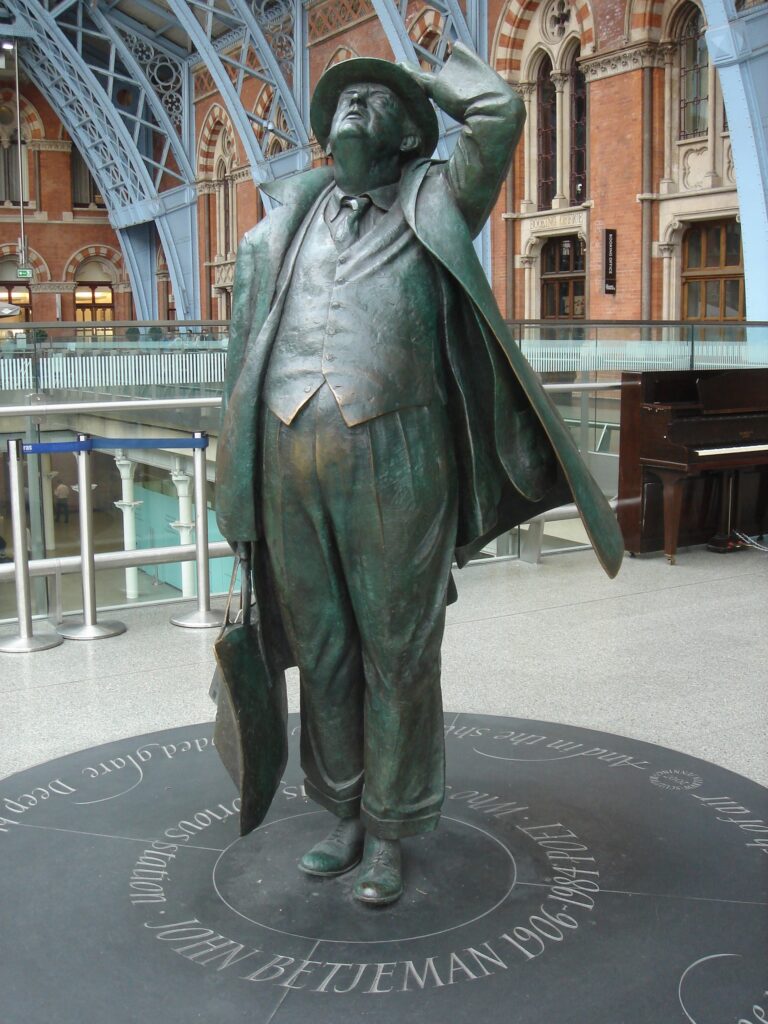
It depicts him walking into the new station for the first time carrying a bag of books. He is looking up at the great arc of the train shed – which he always did because it took his breath away. He is leaning back and holding onto his trilby hat, his coat tails billowing out behind him, as if caught by the wind from a passing train. He’s clad in suit and mackintosh with the work seeking to capture his ‘shabby appearance with scruffy collar undone and one shoelace knotted string’.
The central text in the Cumbrian slate around where he stands is an extract from his poem Cornish Cliffs …
And in the shadowless unclouded glare, Deep blue above us fades to whiteness where, A misty sealine meets the wash of air. / John Betjeman, 1906 – 1984, poet, who saved this glorious station.
Surrounding the statue and base is a series of satellite discs of various sizes set into the floor and hand-inscribed by Jennings with quotations from Betjeman’s poetry …
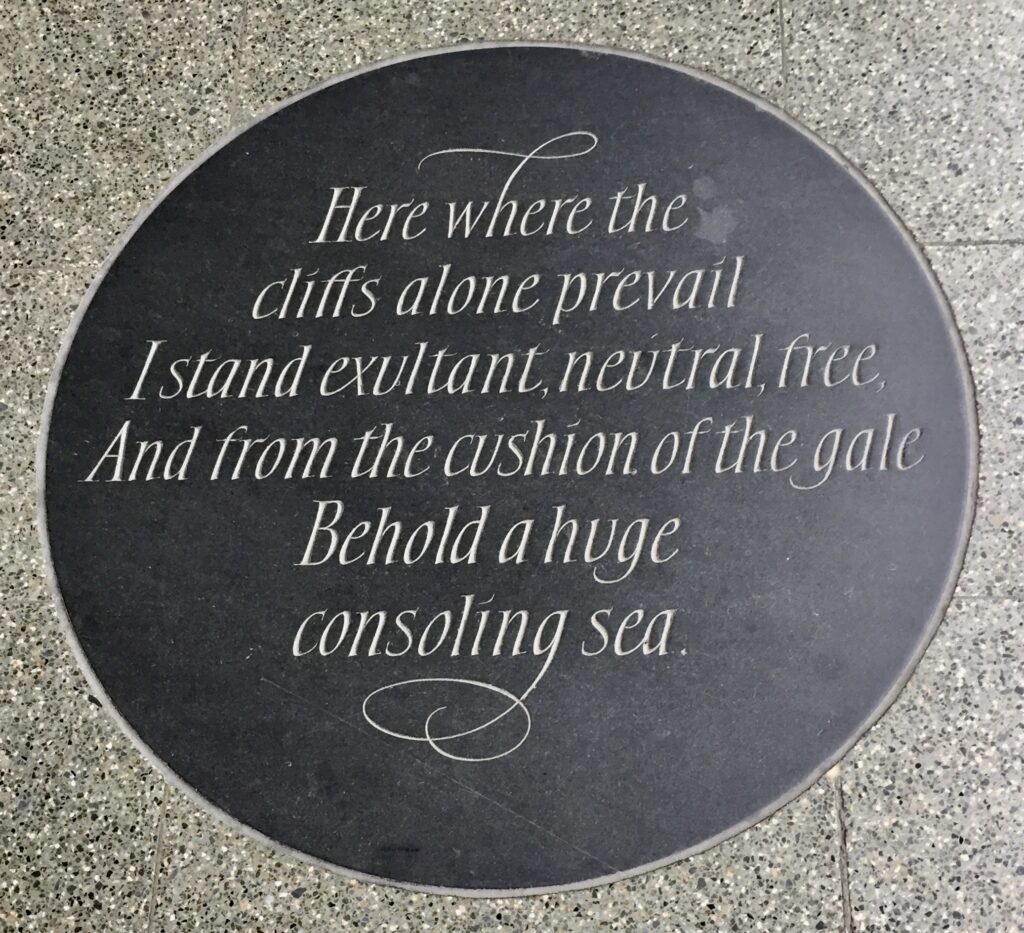
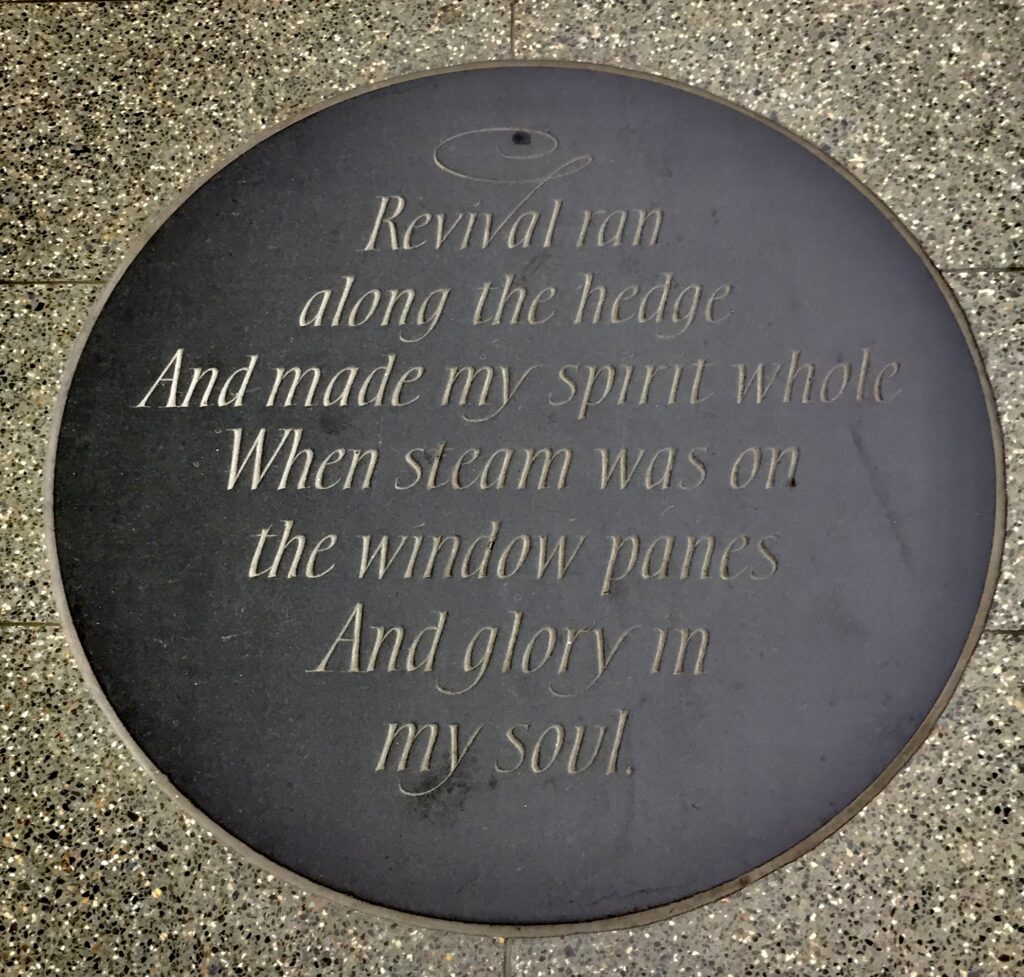
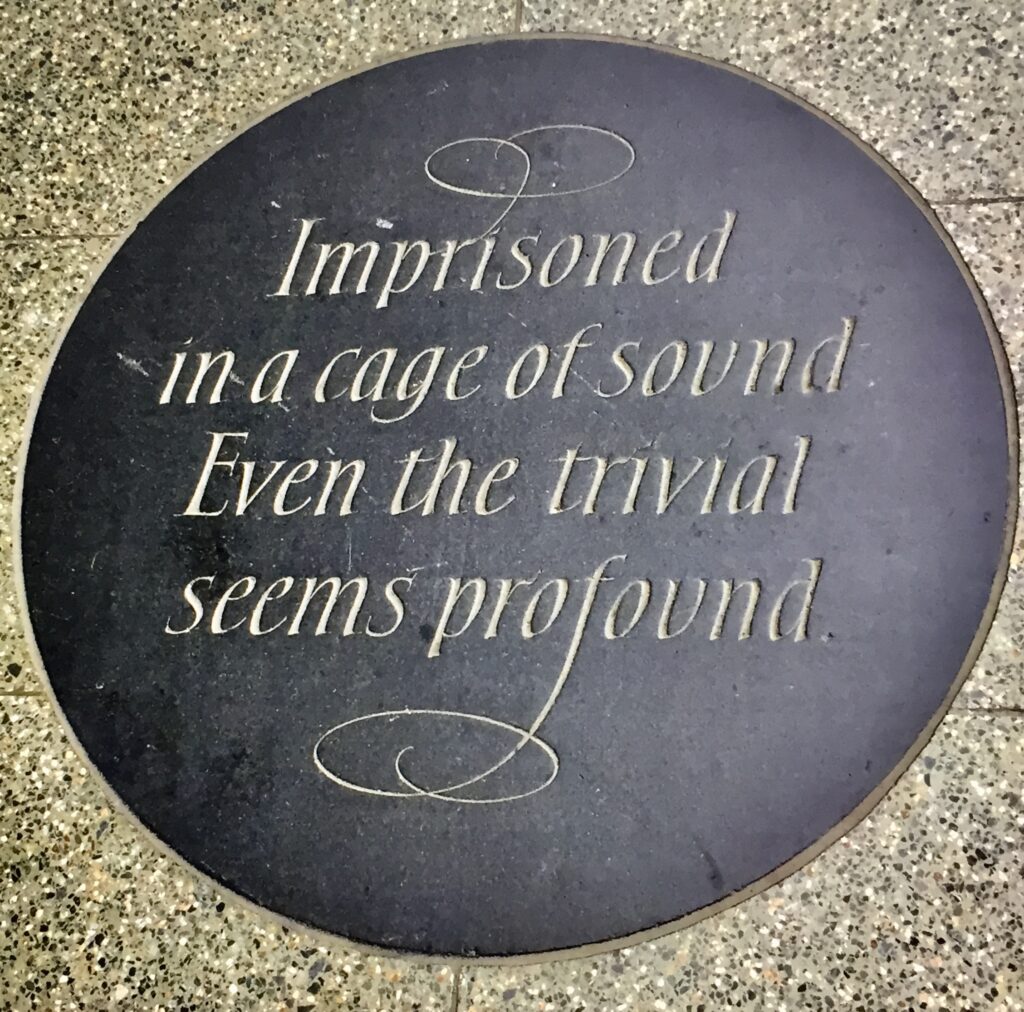
The inscriptions on the discs are carved without the addition of poem titles. Jennings says: ‘I wanted texts that have a particular meaning but also point to something bigger, so some hint at the joy of trains and travel and stations and architecture, some the seascapes at the other ends of the lines, and one or two of the feelings of yearning associated with stations and life.’
Apart from the magnificent shed roof there are other installations to enjoy and you catch a glimpse of them in this picture …
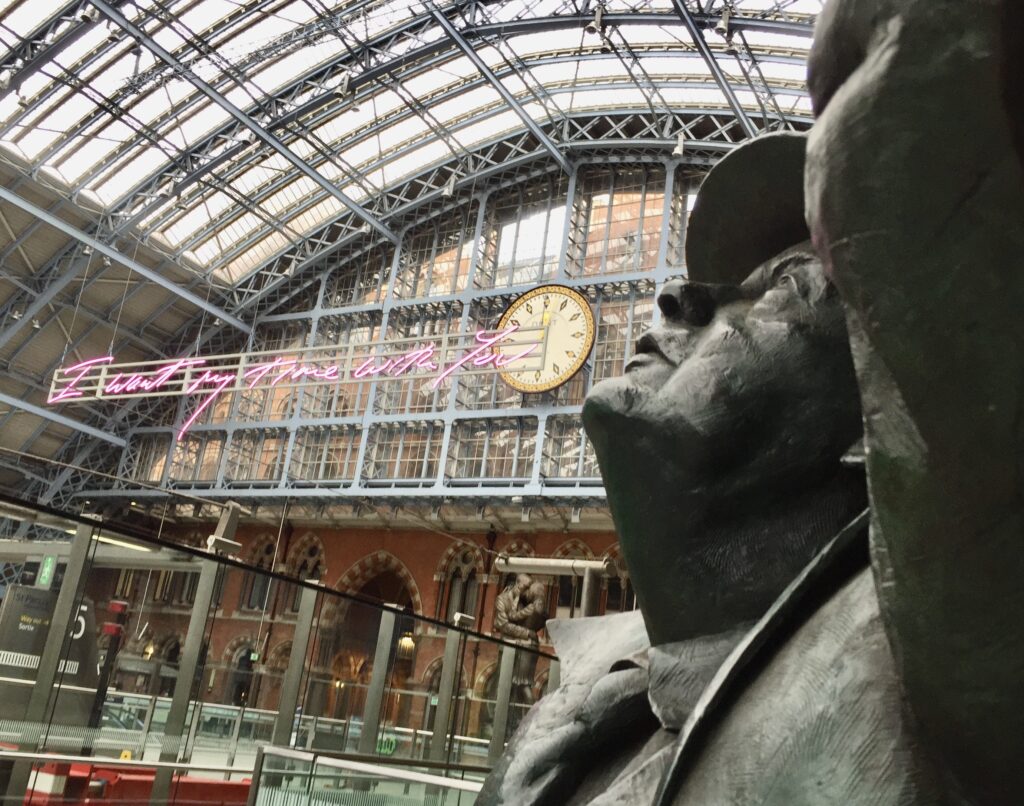
Suspended from above is a revolving display of contemporary art. Currently it’s a hot pink neon sculpture by Tracy Emin, the largest she has ever created …
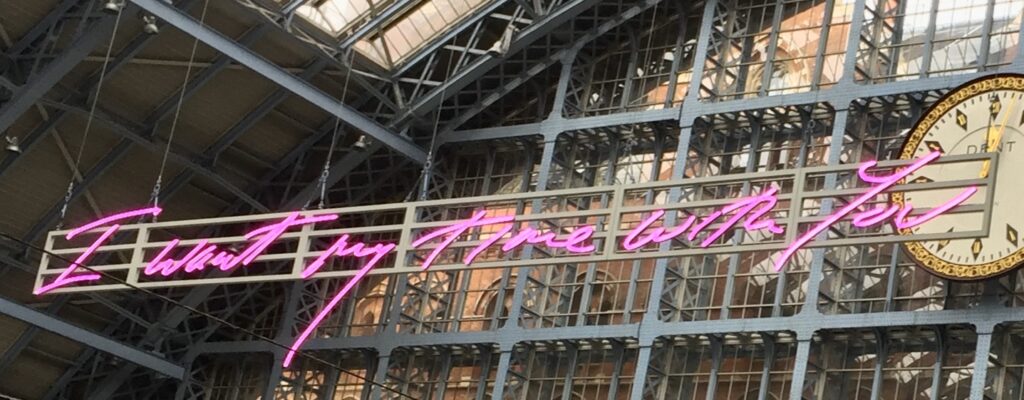
She made this sweet comment …
I cannot think of anything more romantic than being met by someone I love at a train station and as they put their arms around me, I hear them say ‘I want my time with you‘.
The clock is newer than it looks …

It is, in fact, a very painstaking reproduction of the original which was accidentally dropped and smashed into thousands of pieces in 1978, reportedly on its way to an American buyer who had paid £250,000 for it. The US gentleman didn’t want a very expensive jigsaw puzzle but the pieces were rescued by Roland Hoggard, a train driver who was shortly due to retire. He paid £25 for them and then spent much of his retirement restoring it so that his labour of love could be proudly displayed on the side of his barn …
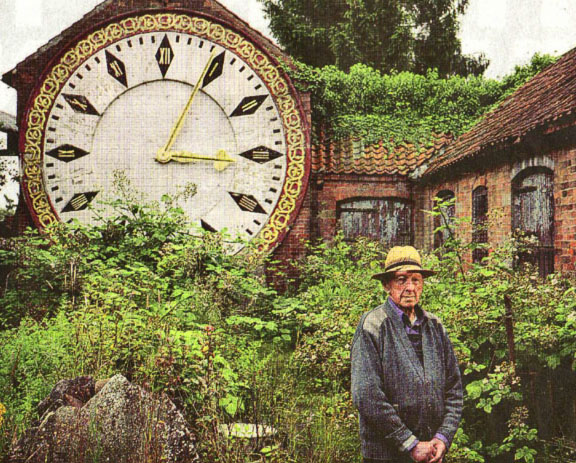
It was far too fragile to be moved but Roland (now well into his nineties) very kindly gave access to the people creating the reproduction in order that it could be accurate in every way. It’s a great story and you can read it in more detail here.
It can’t be all that often when a fellow sculptor describes a contemporary’s work as ‘crap’ but that’s what Antony Gormley said about the statue called The Meeting Place …
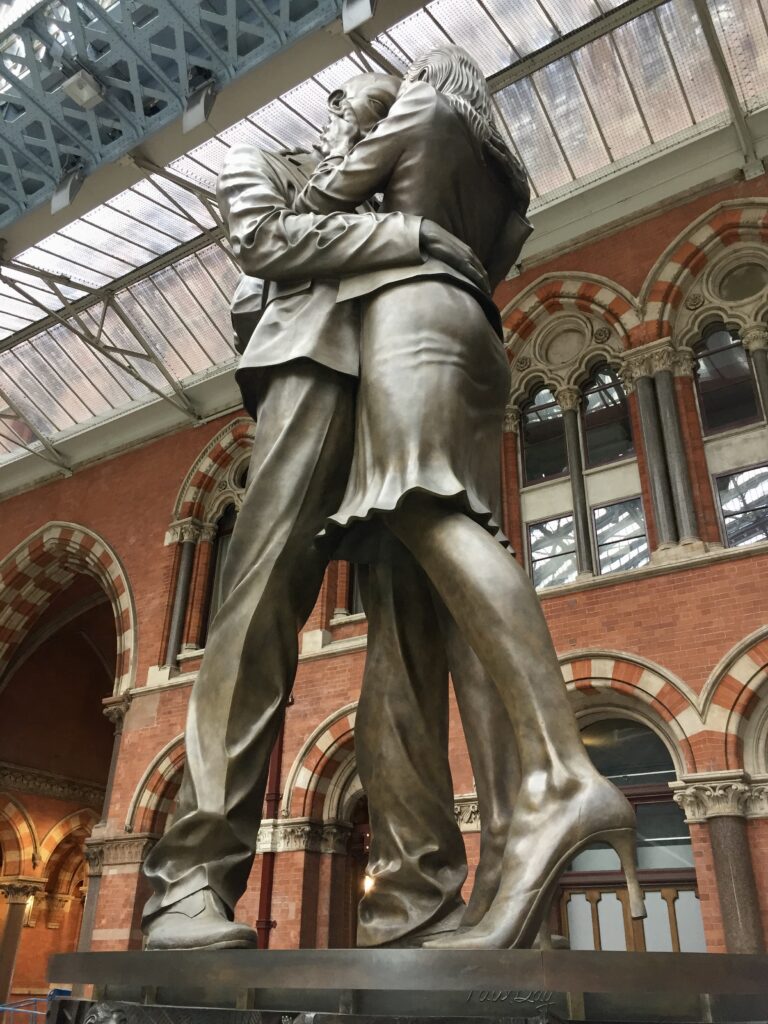
The sculptor,Paul Day, said that his chosen approach ‘was an embracing couple under a clock at a railway station; something that can be universally recognised as a symbol of travel is the couple being reunited. The clock becomes a moon at night. There is a sense of reunification. That had the romantic element’. Installed in 2007 you can’t miss it – it’s nine metres (30 feet) high and definitely inspires a love/hate reaction among passers by. The figures, incidentally, are modelled on Day himself and his wife.
Like it or loathe it, however, the work also incorporates something I think is wonderful – the frieze beneath the characters’ feet. It extends all the way around the base of the statue, each panel seamlessly merging with the next. Each illustration (showing scenes from the railway’s past and present) is deserving of several minutes attention. Here is a selection …
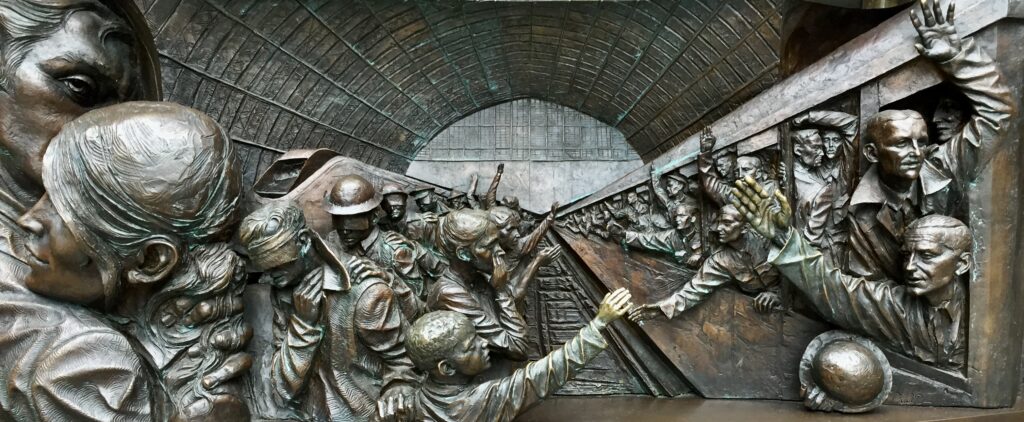
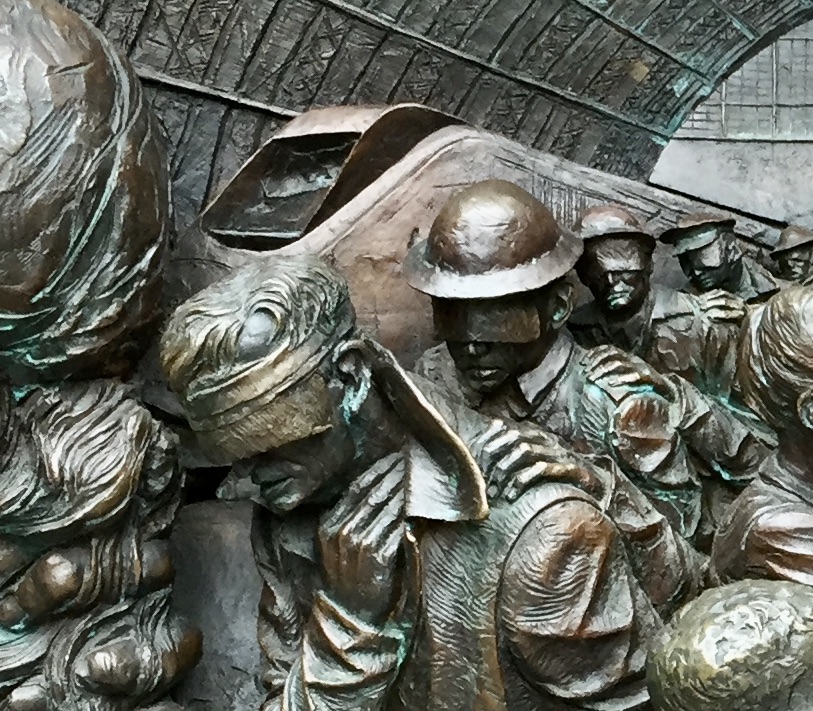
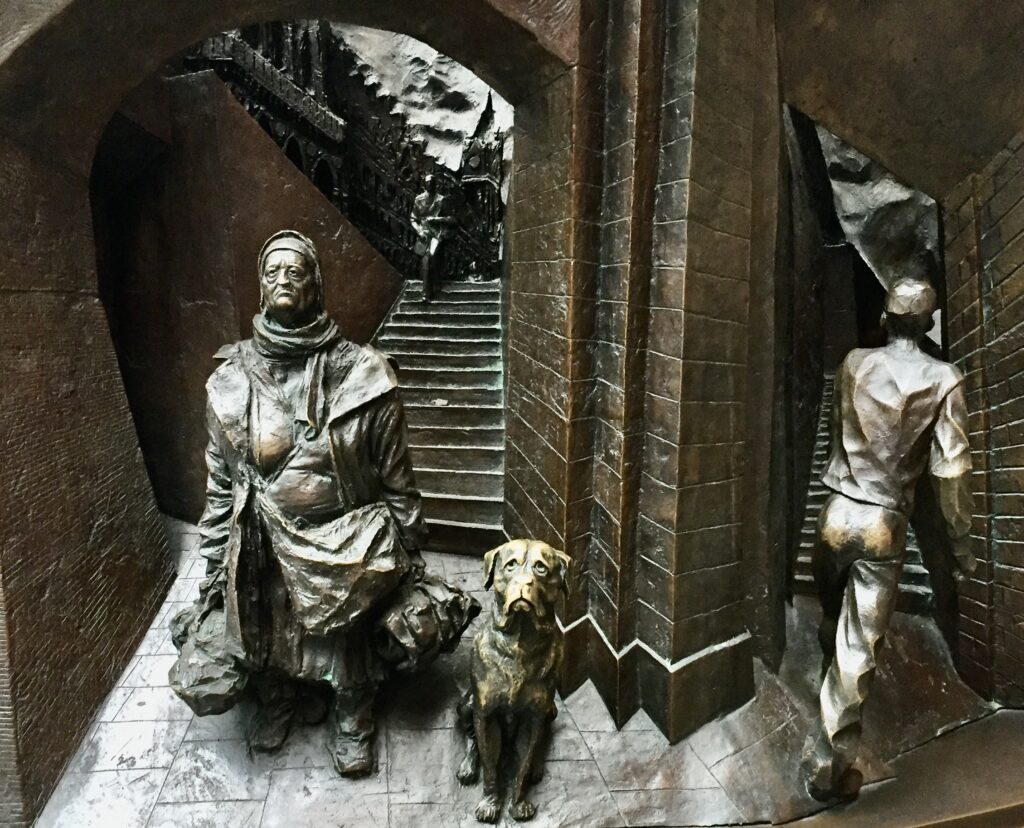
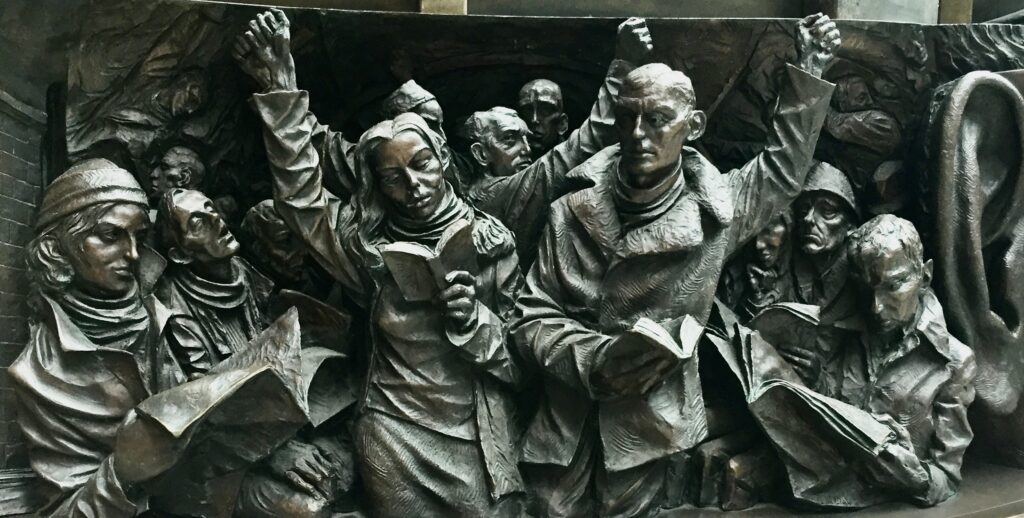
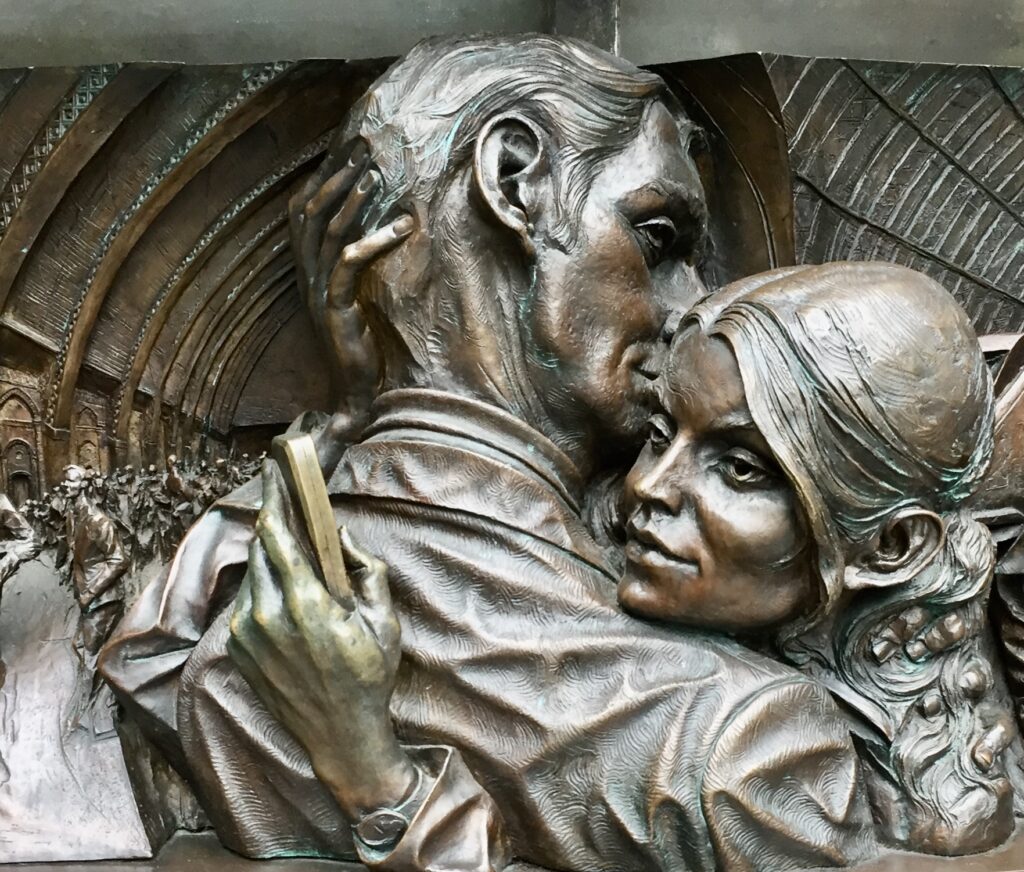
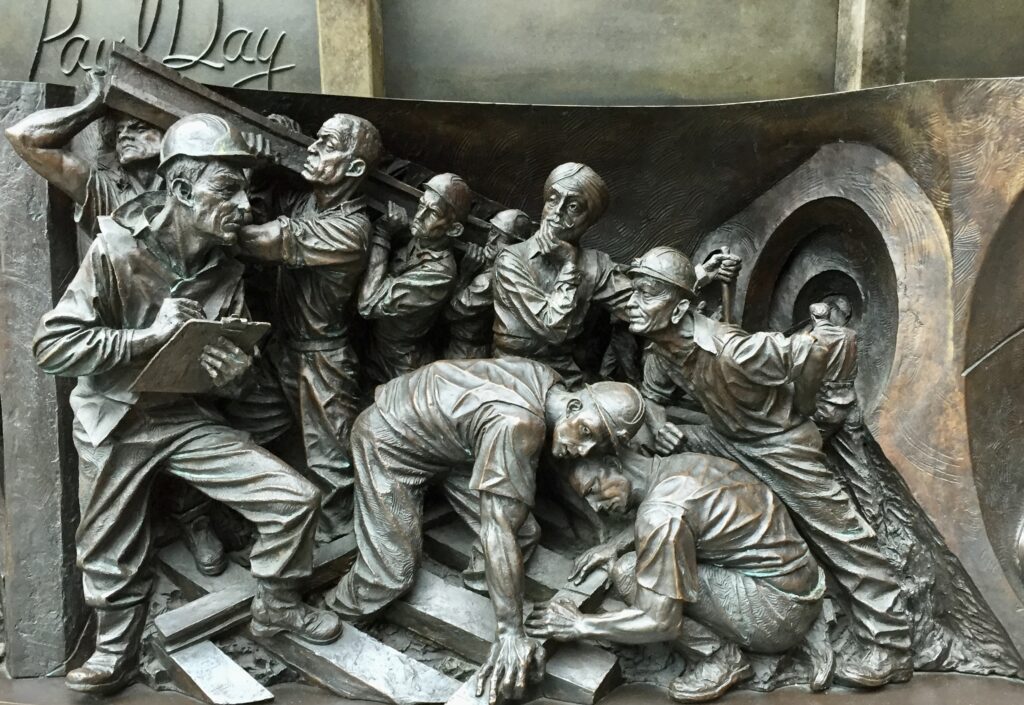
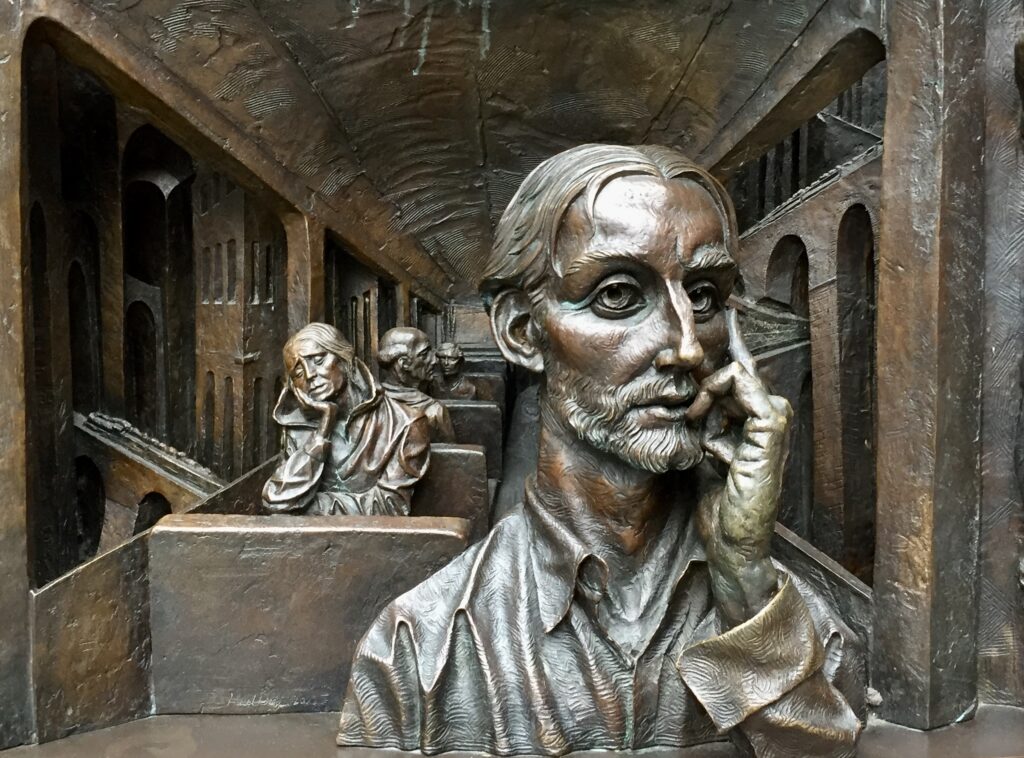
The original design featured – among other disturbing things – a train driven by the Grim Reaper (referencing suicides) and a couple indulging in a Matt Hancock-type snog. Obviously these were withdrawn on grounds of taste. You can read the MailOnline’s over-excited reaction here.
Finally, as you walk around the Upper Level, you can often hear a piano being played with varying degrees of competence. There are two pianos at ground level that you can practise on, one of them having been donated by Elton John …
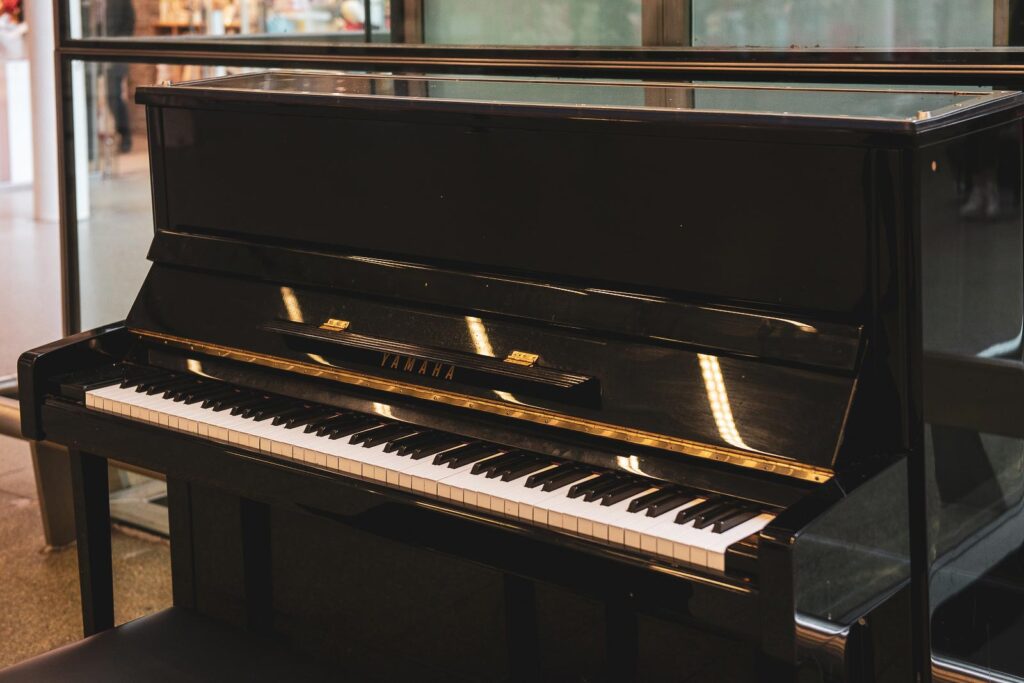
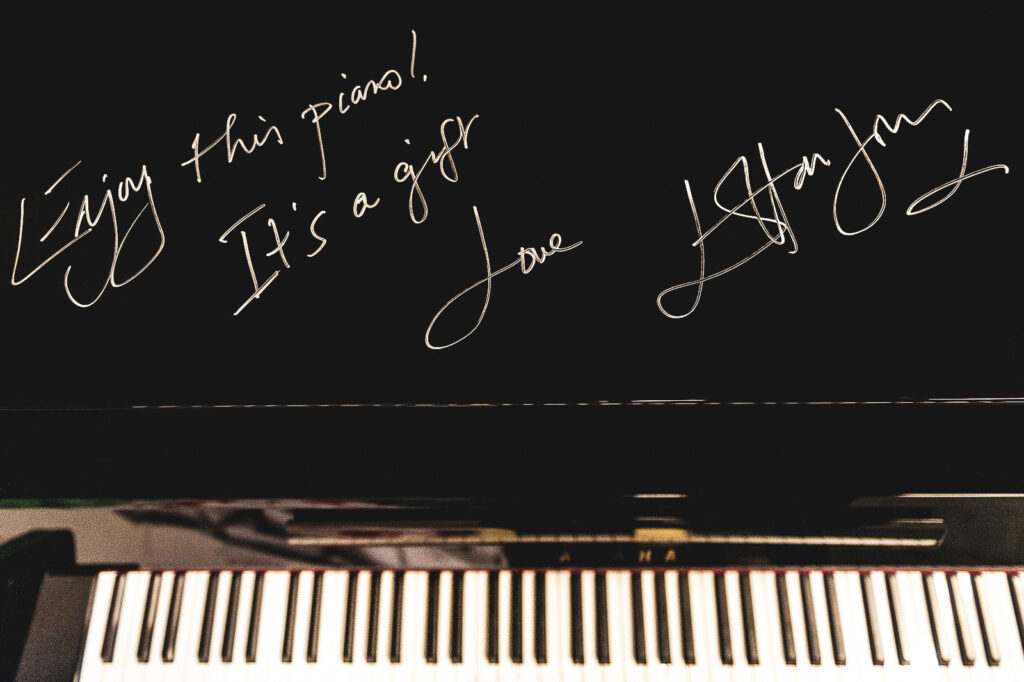
Here’s a link to him actually playing it.
If you would like to follow me on Instagram here is the link …
